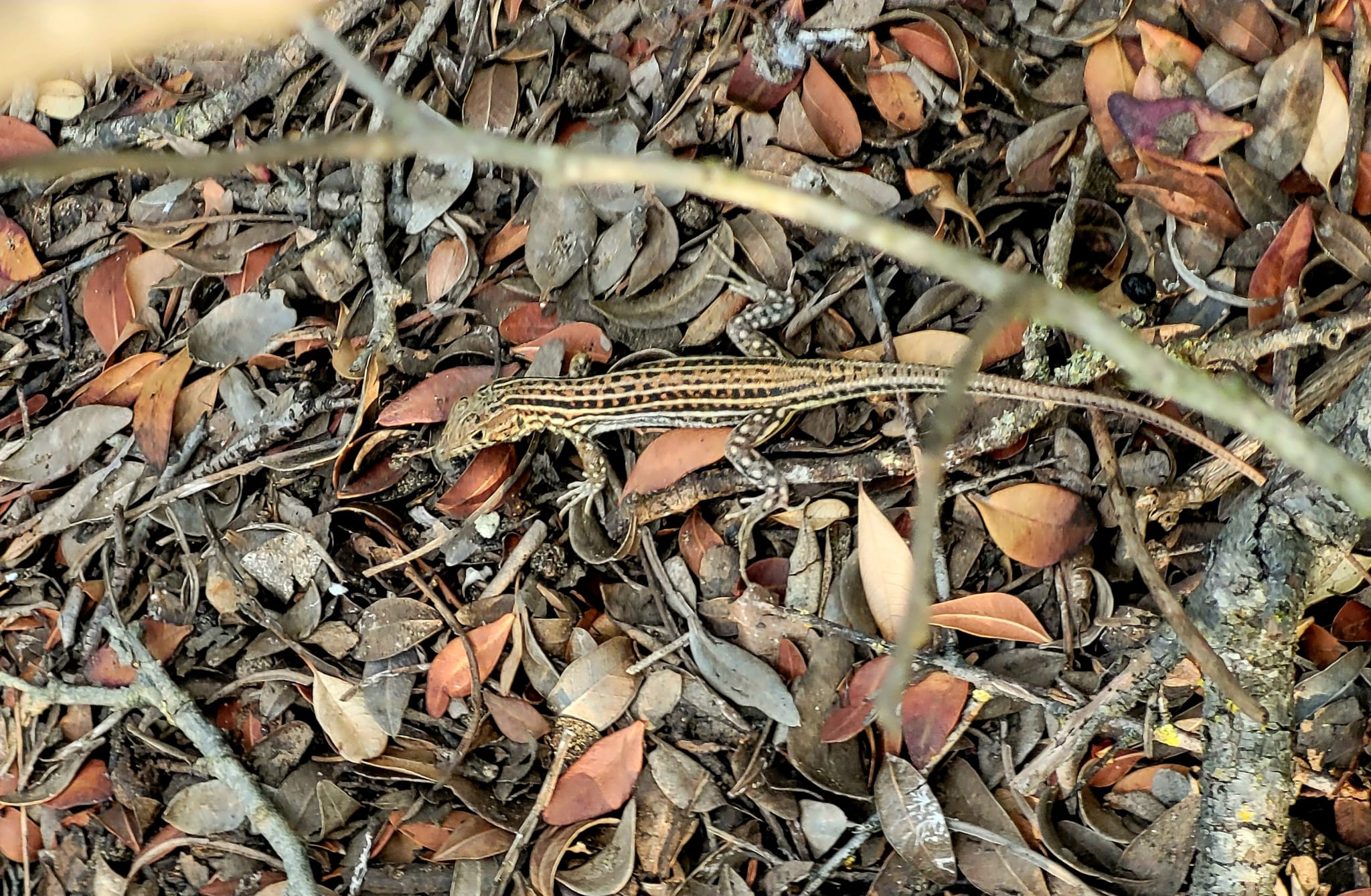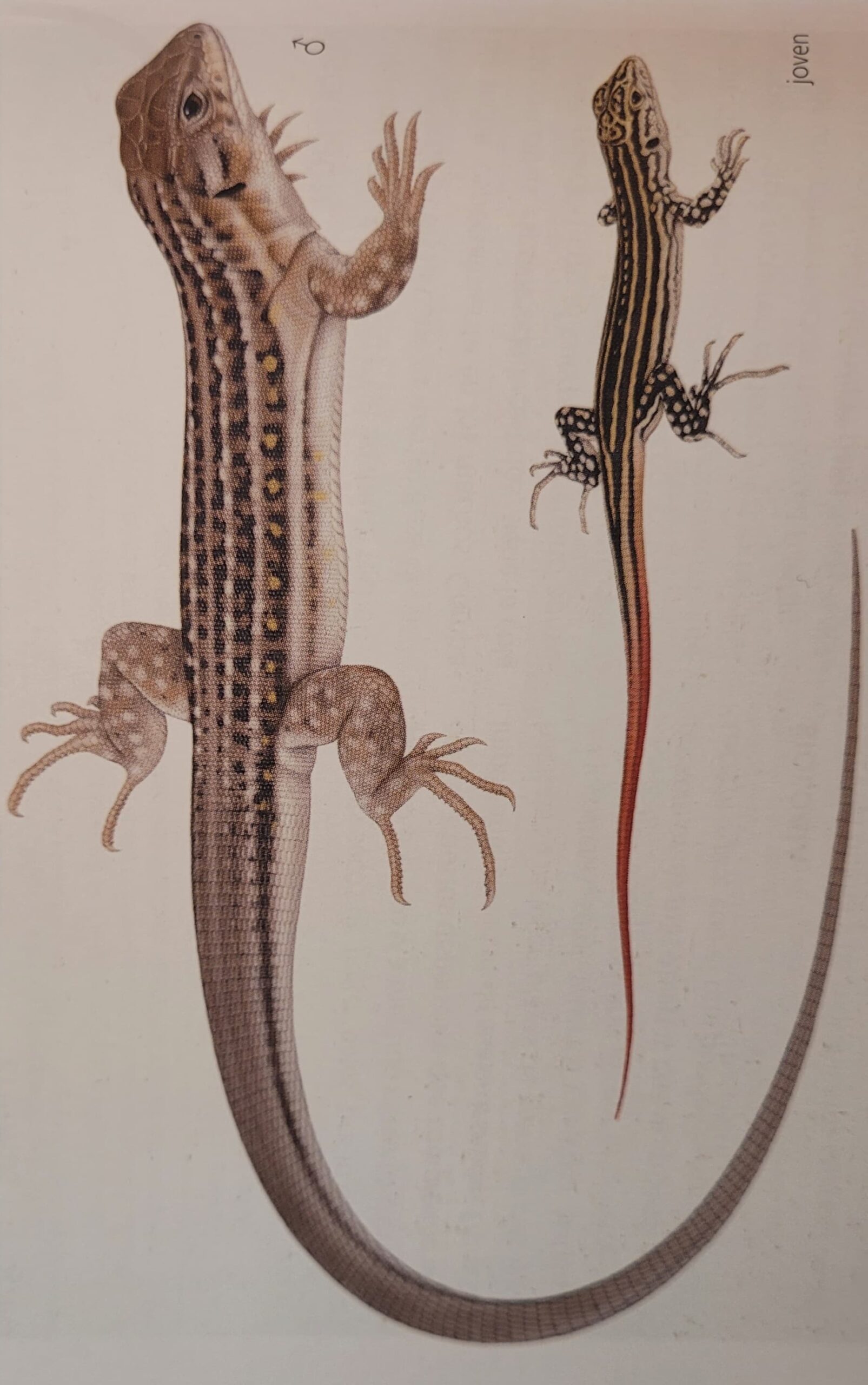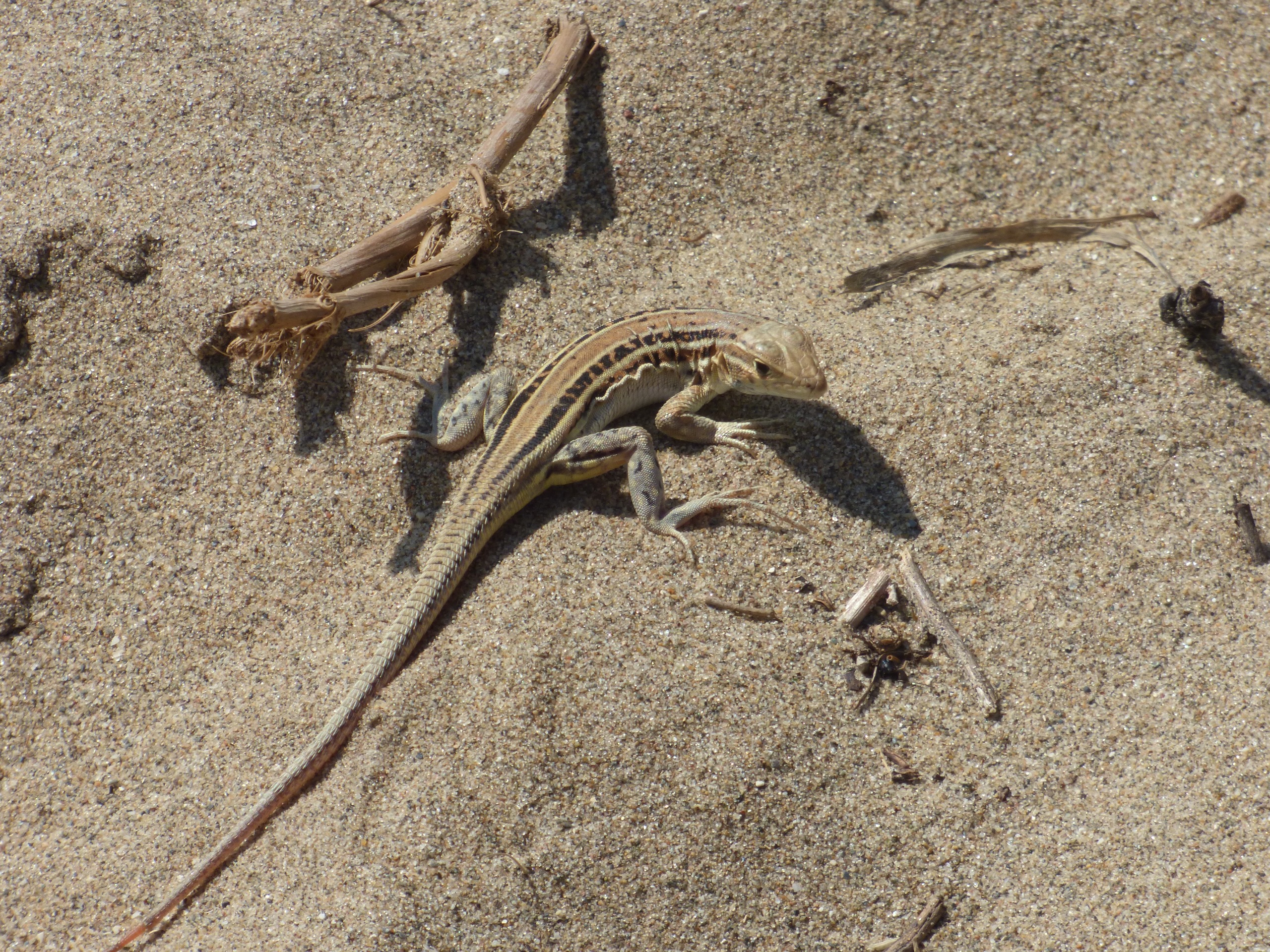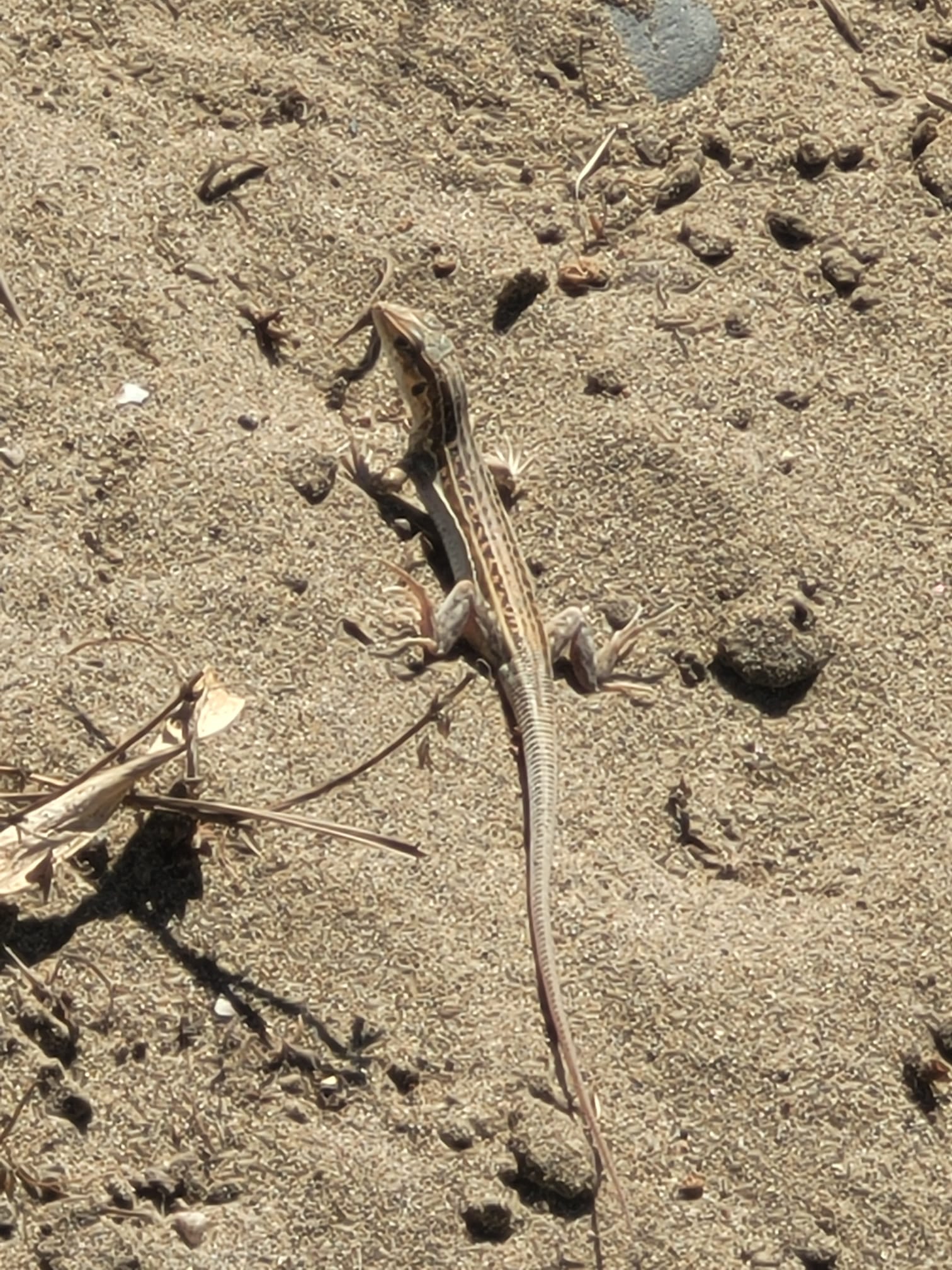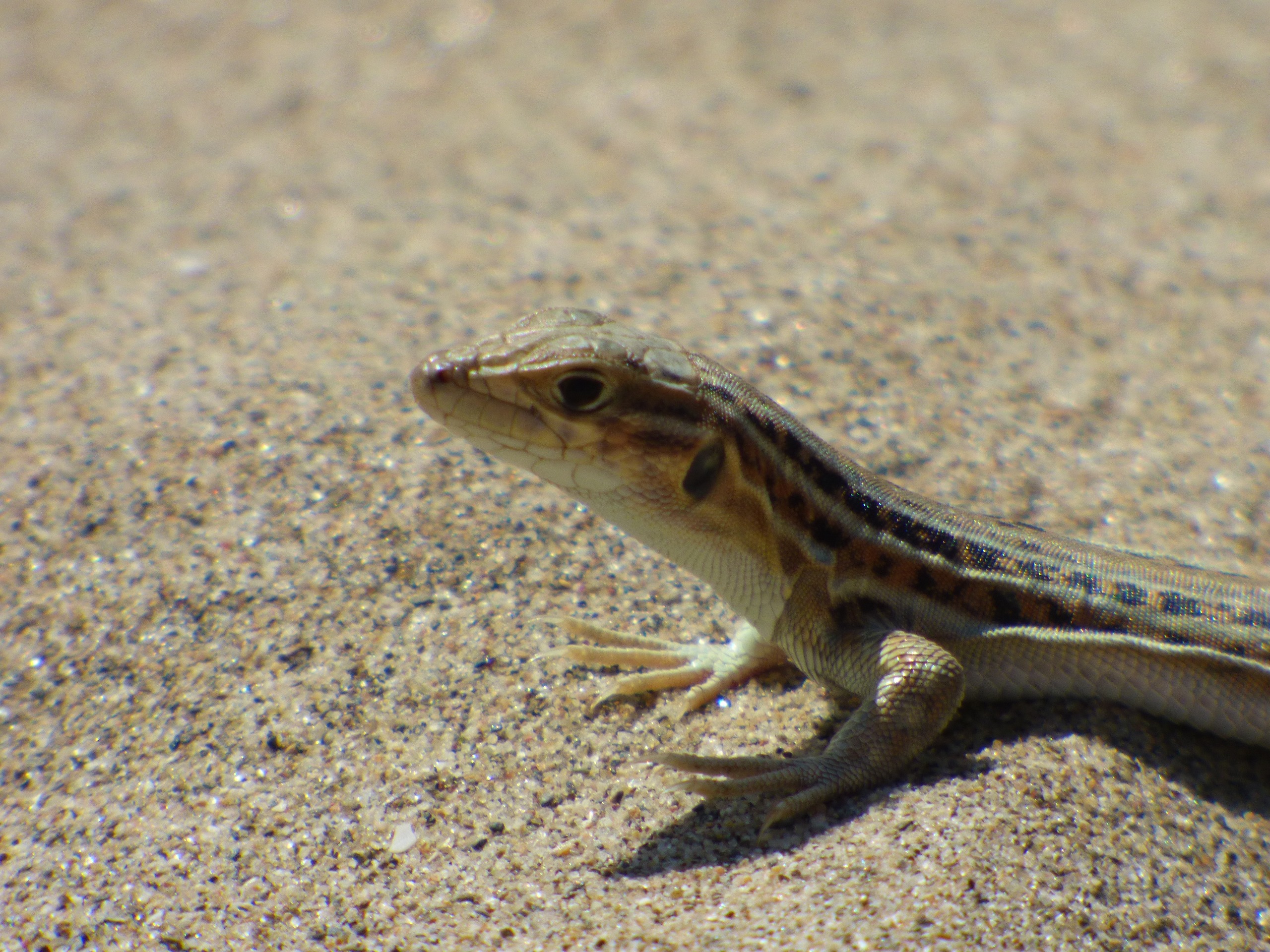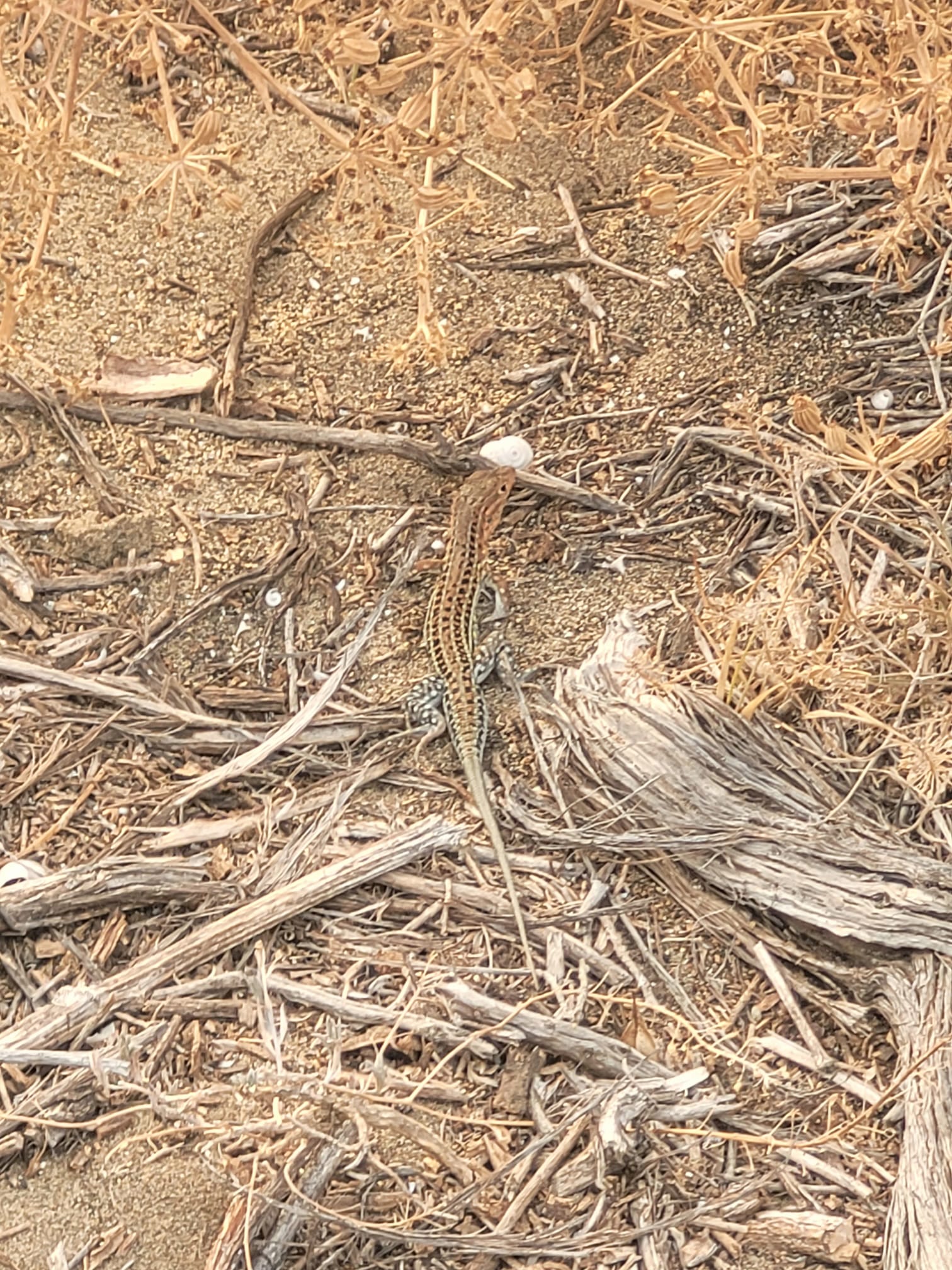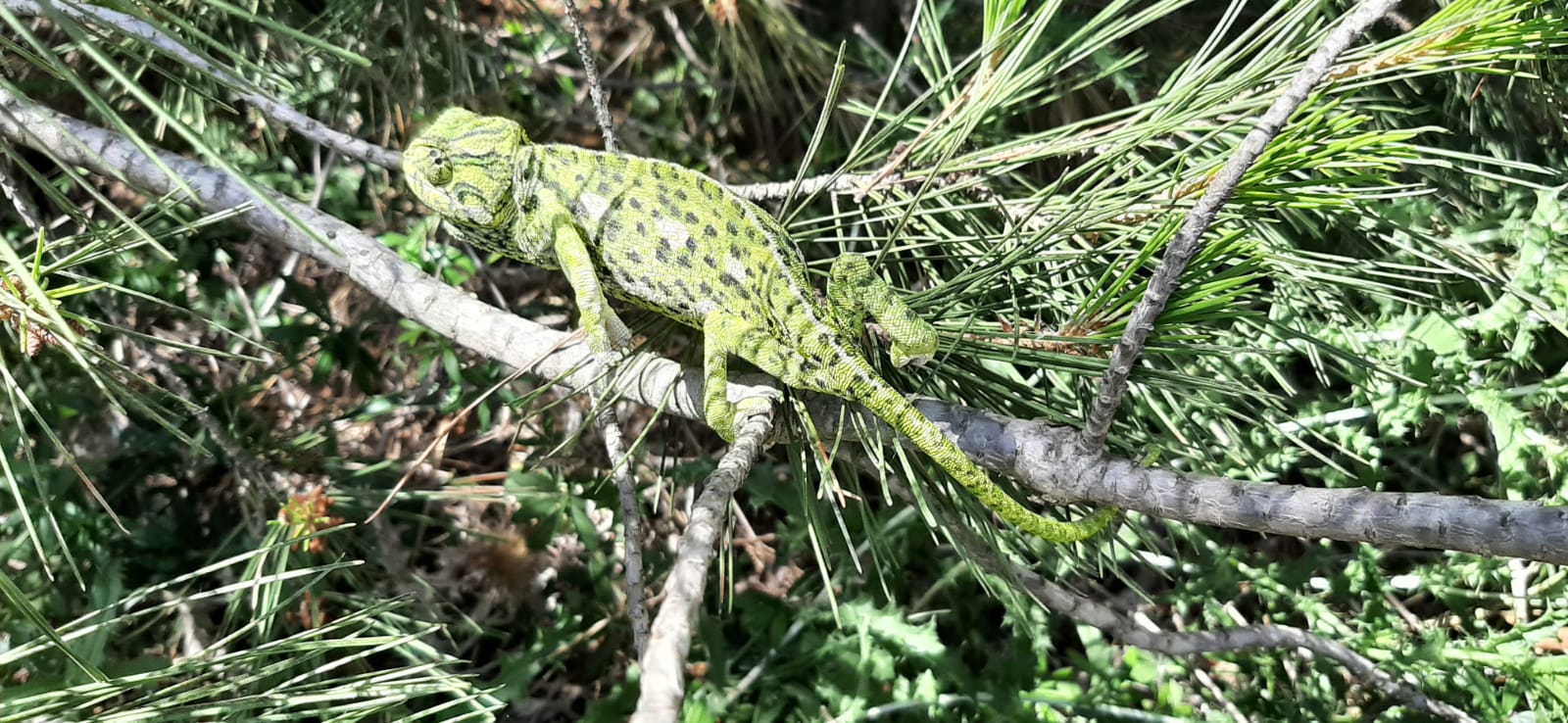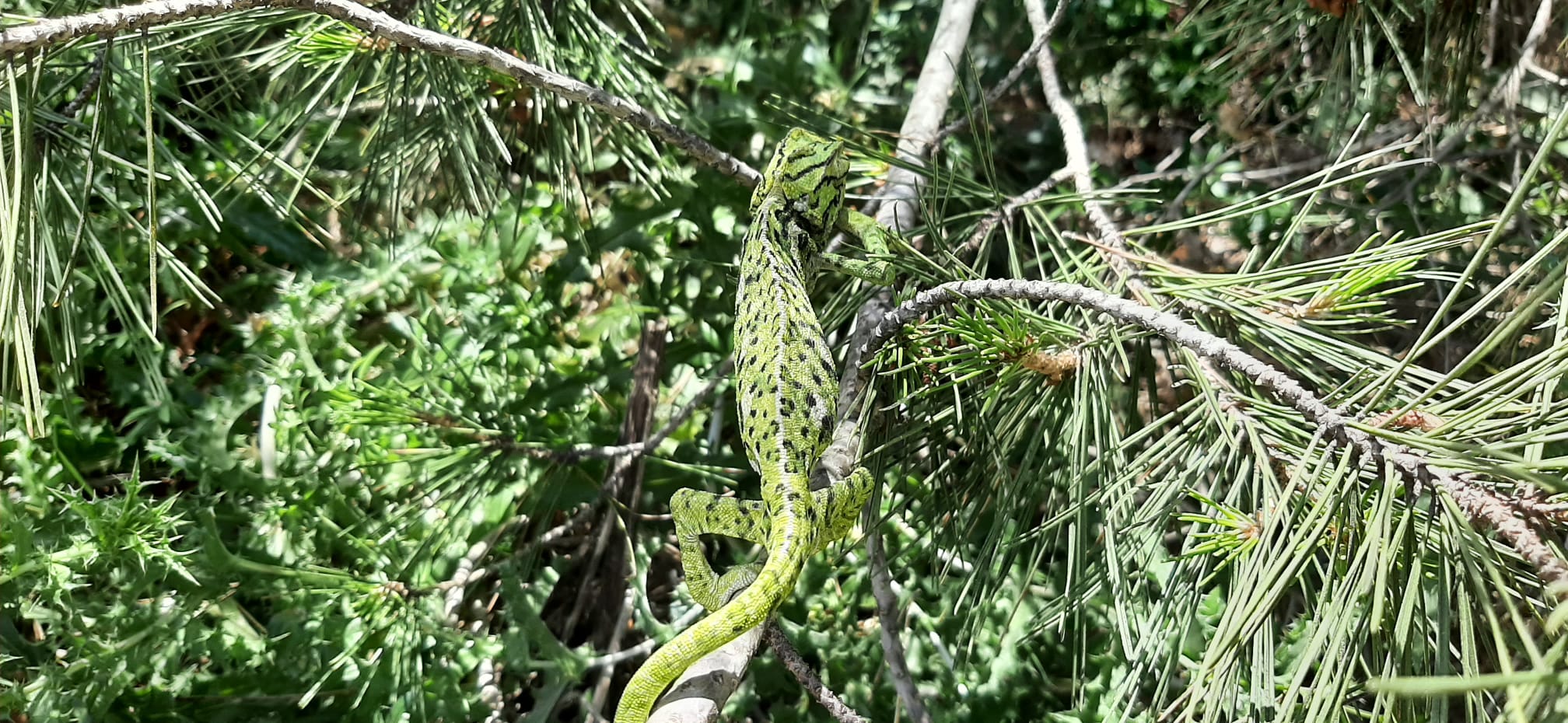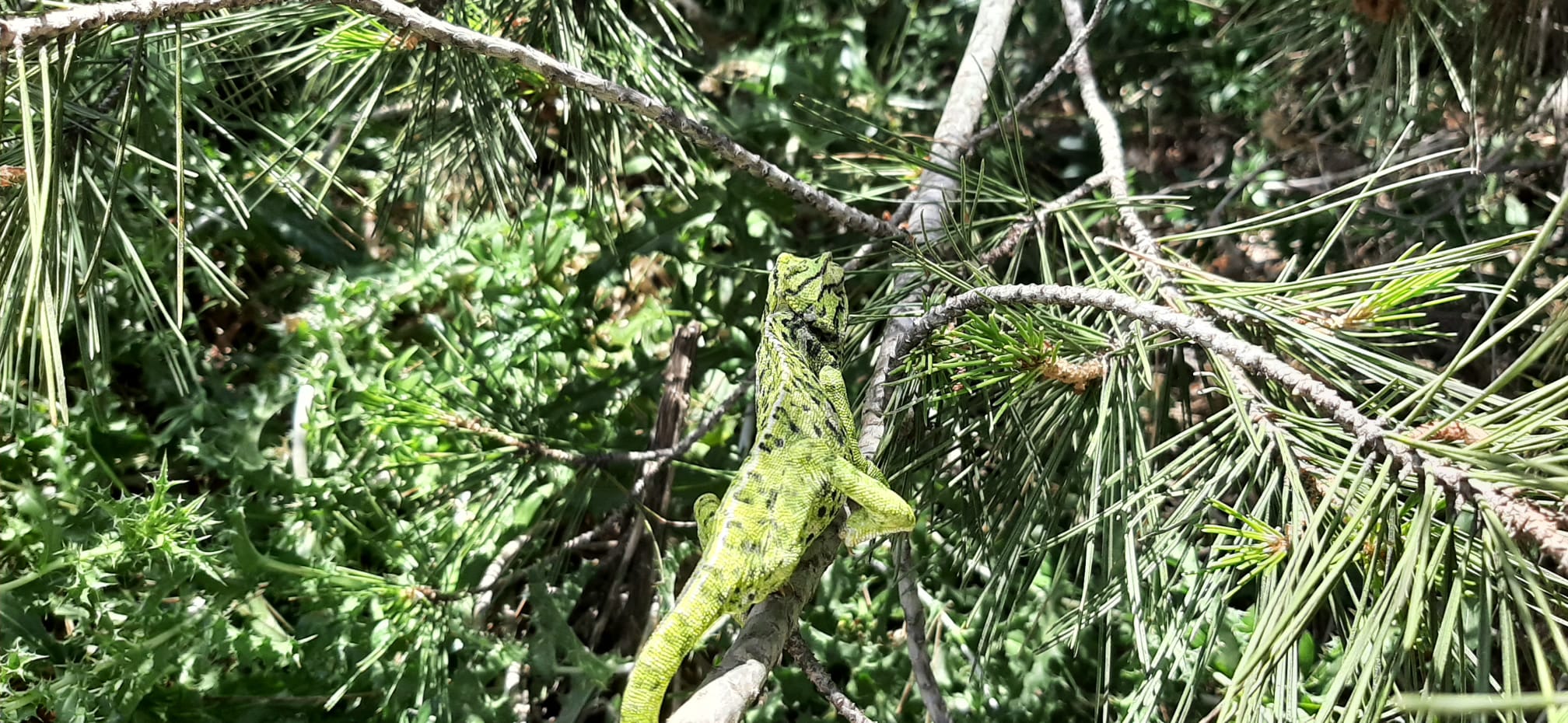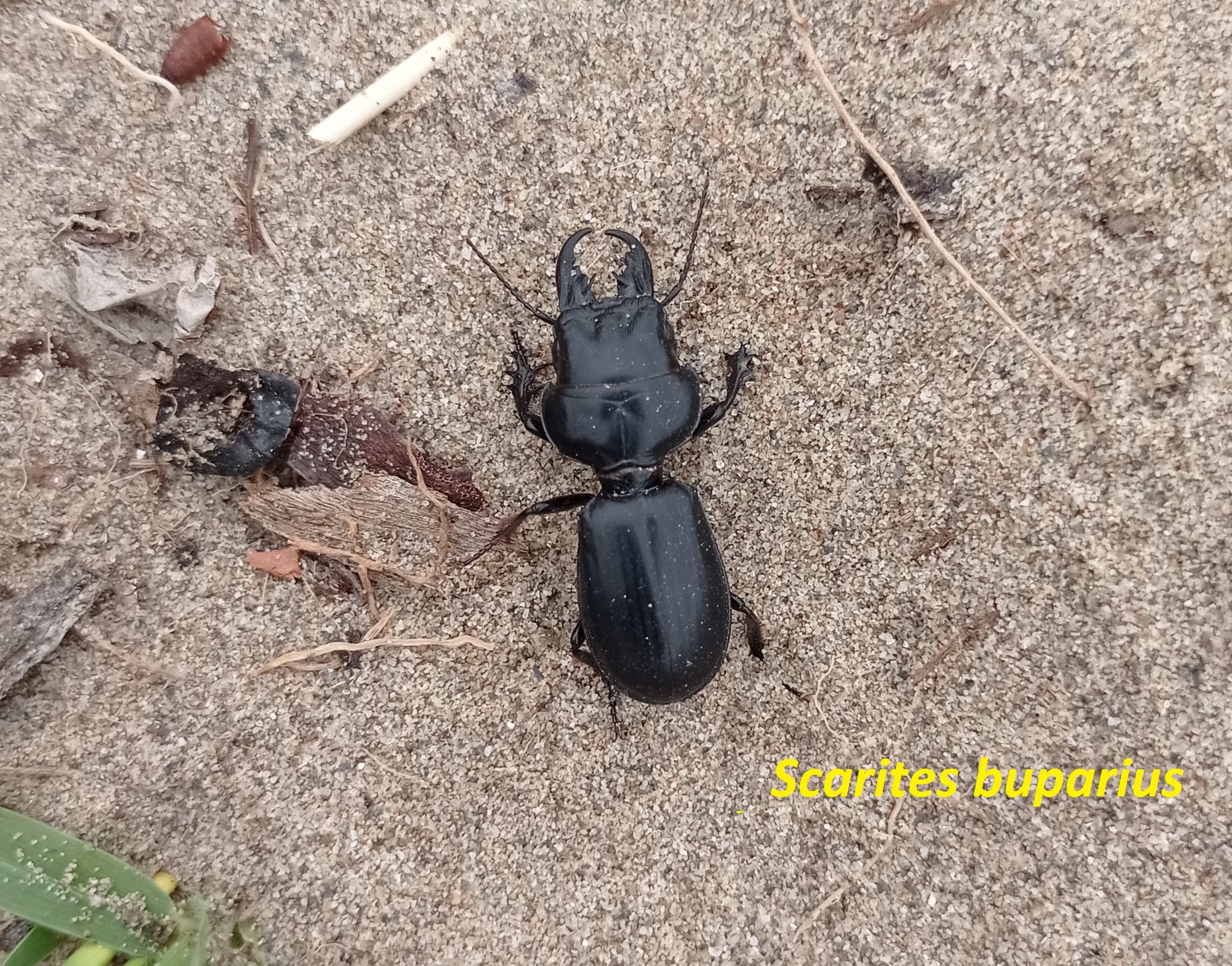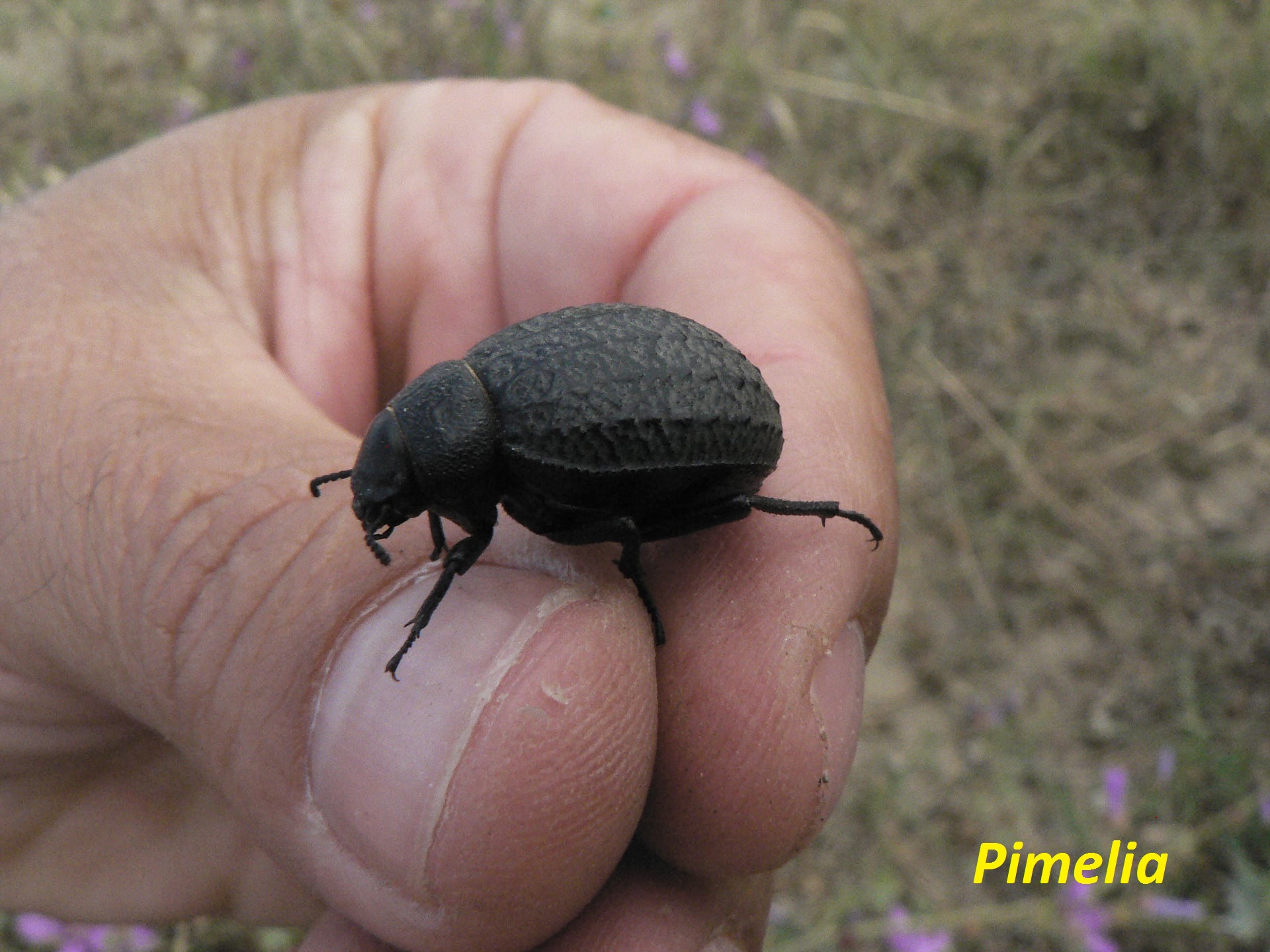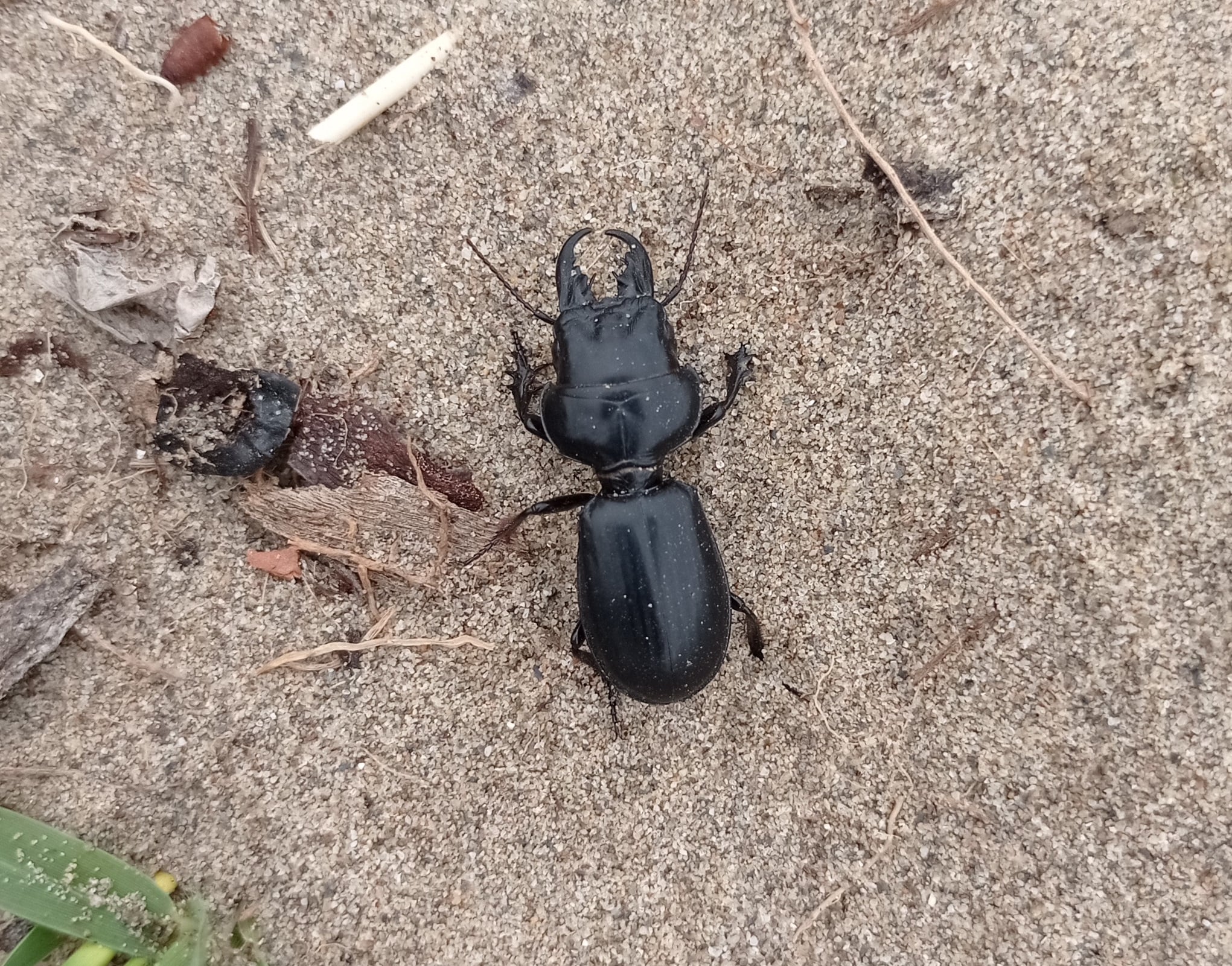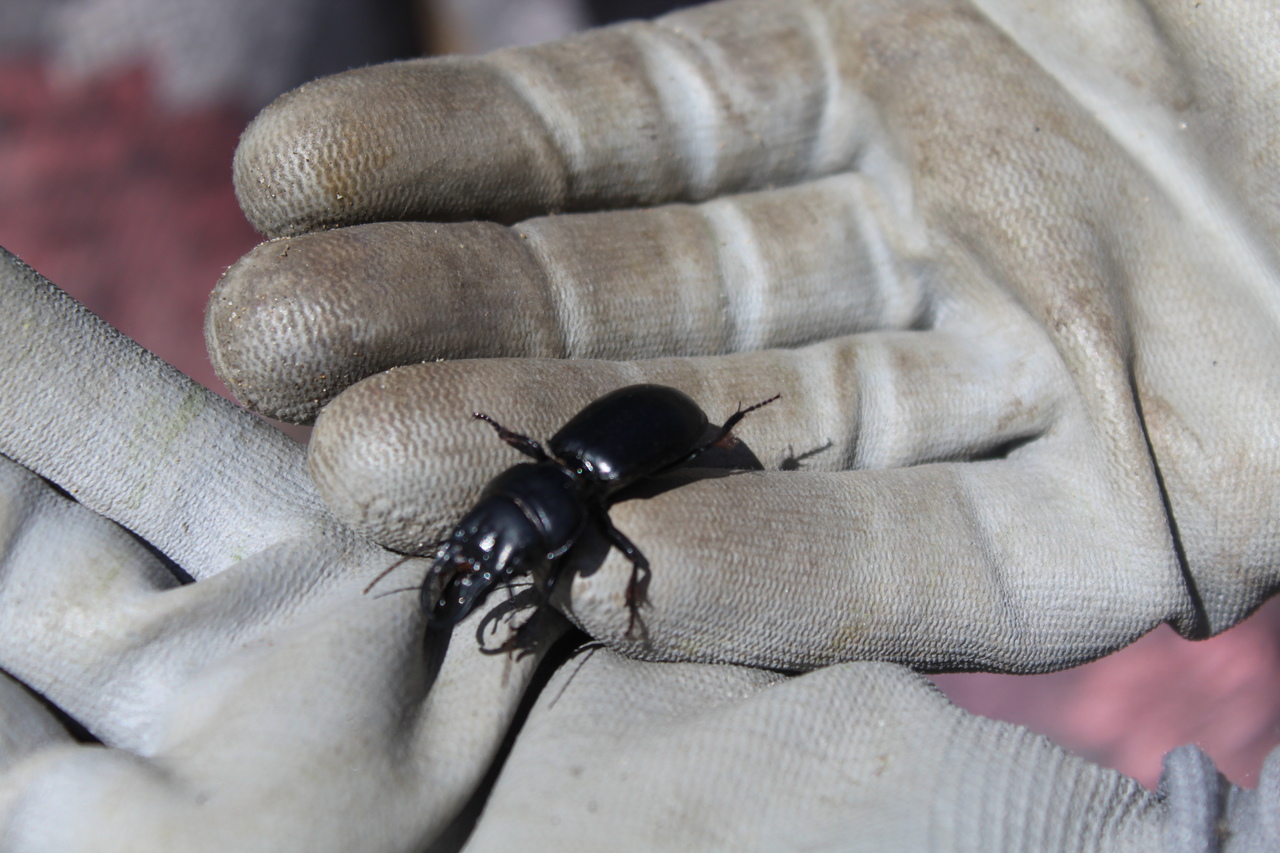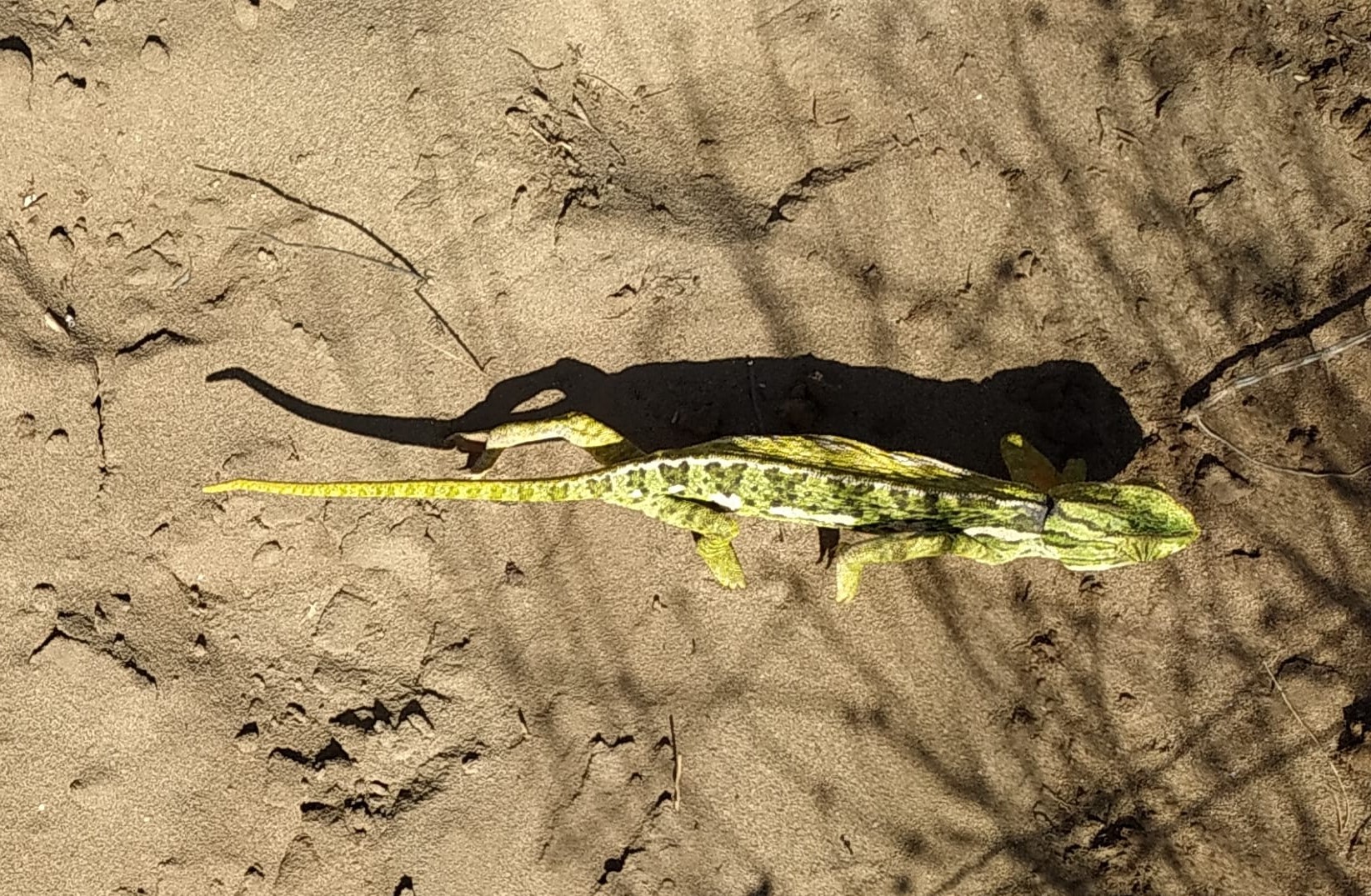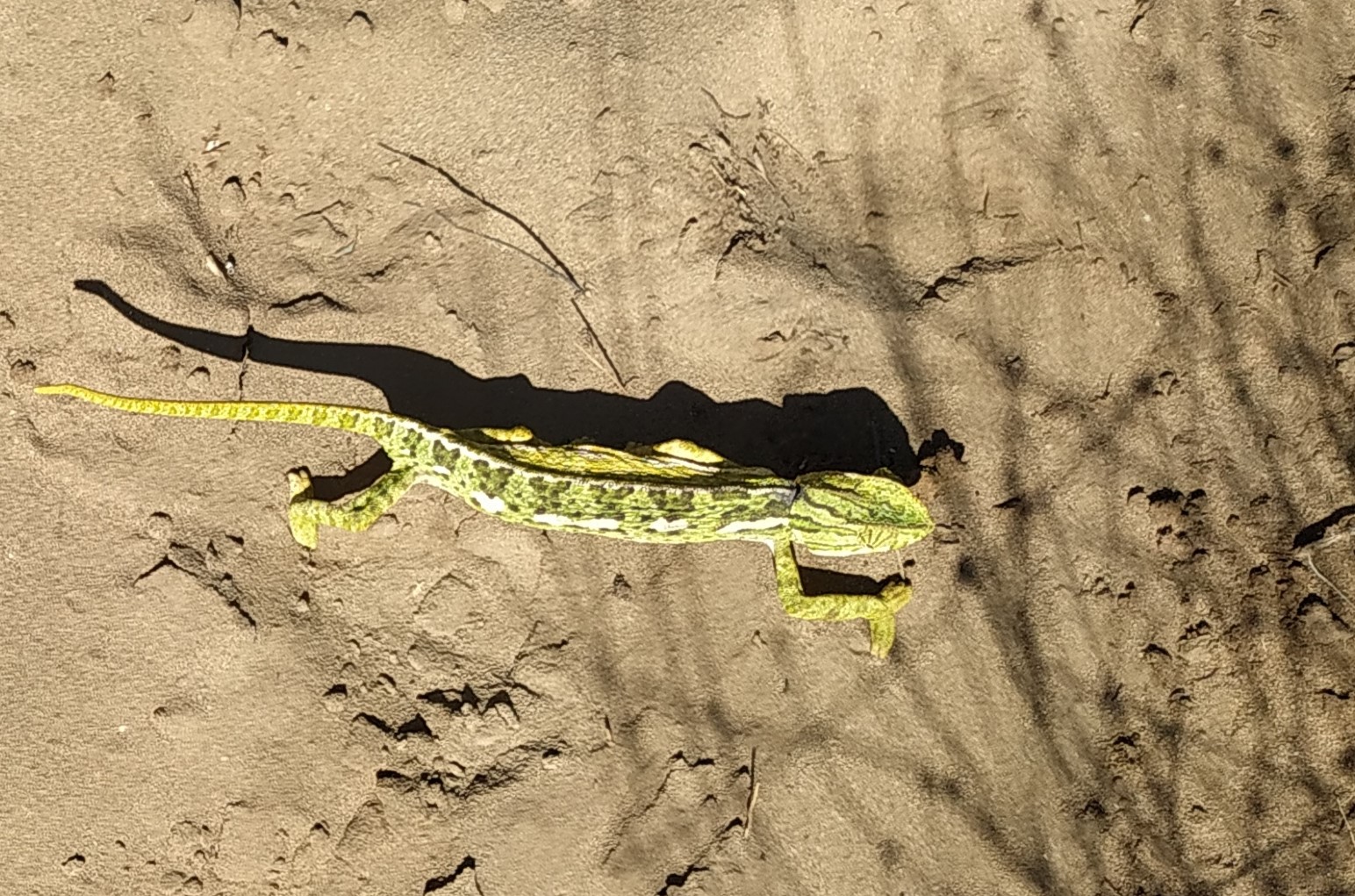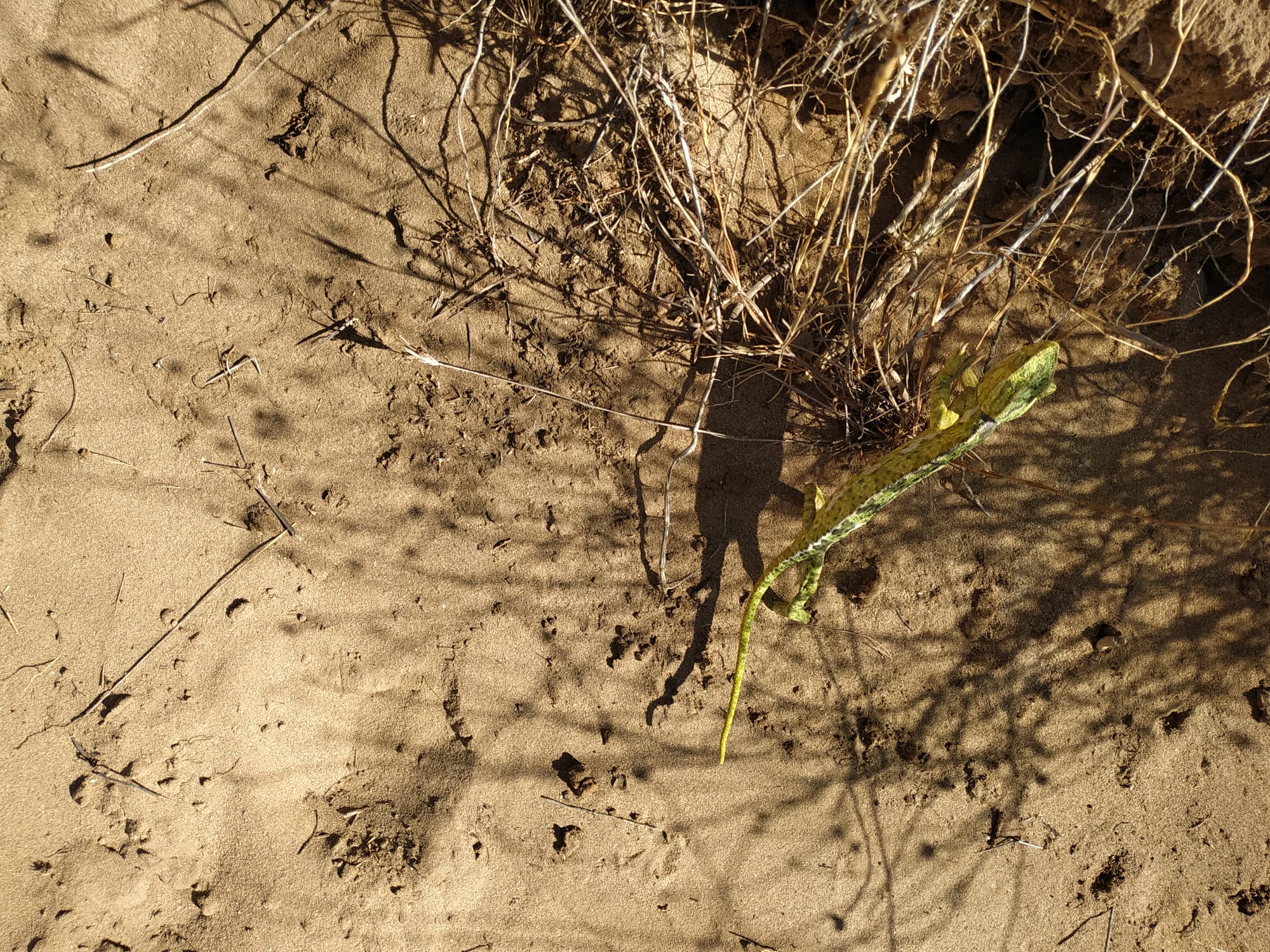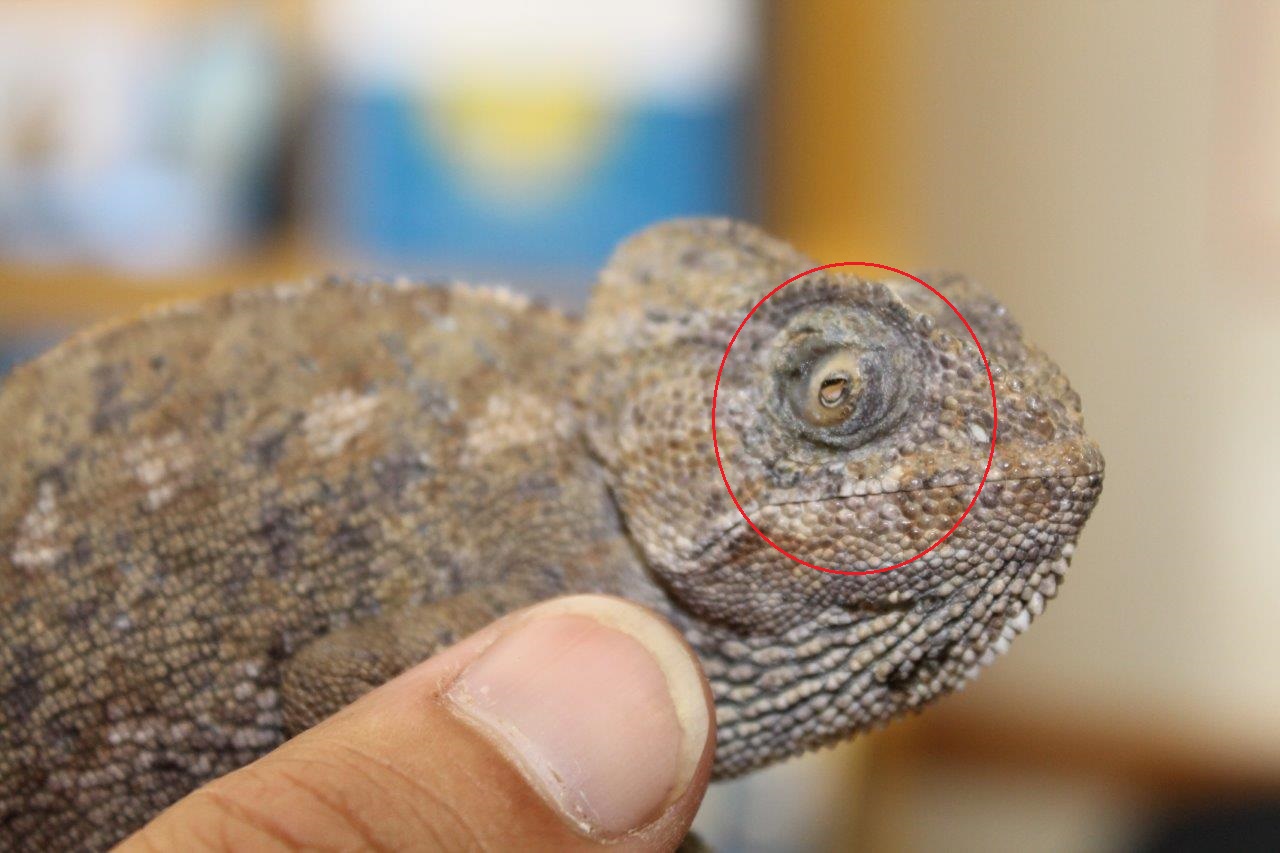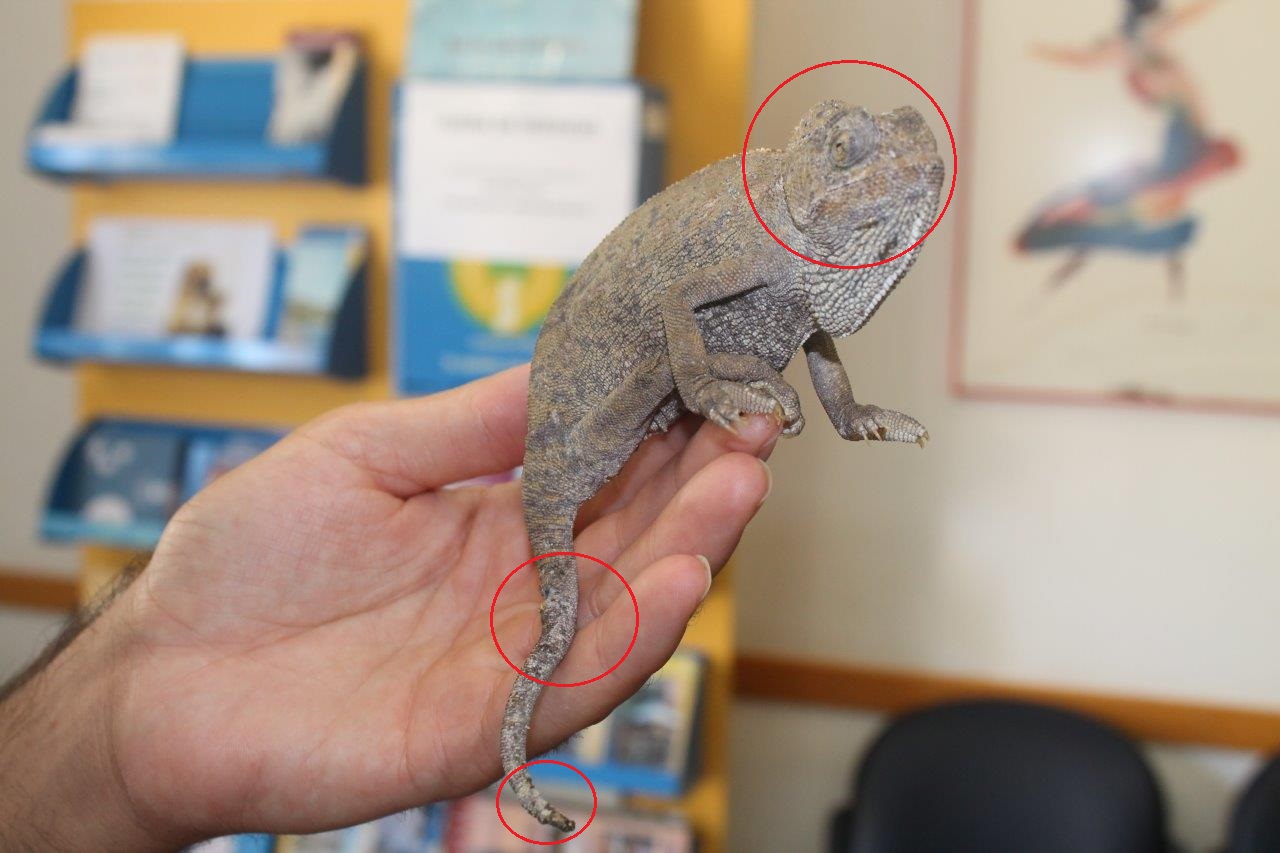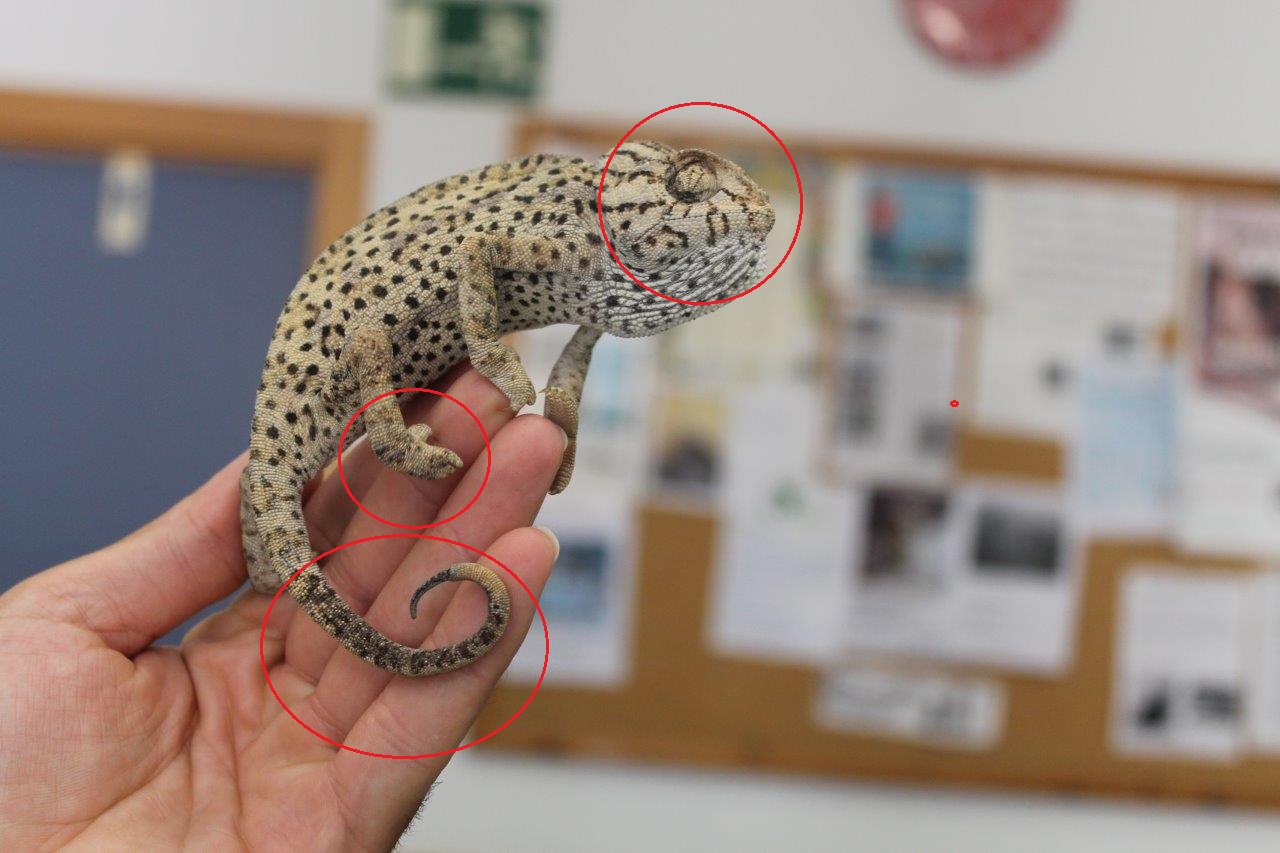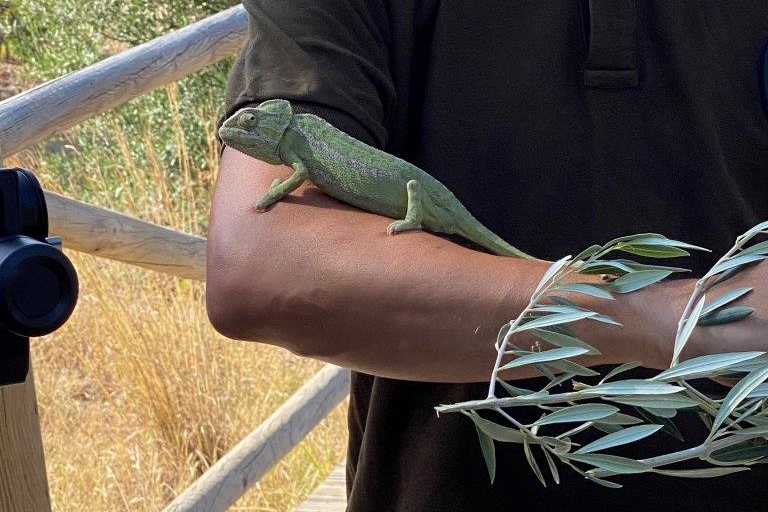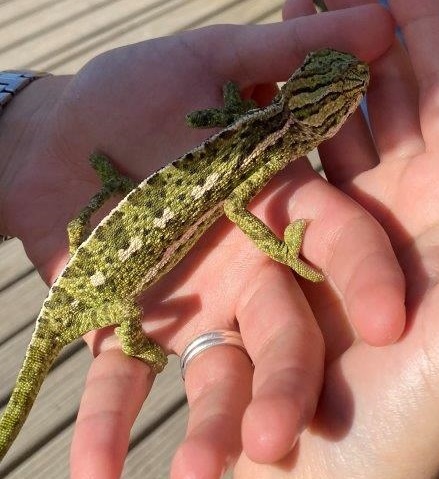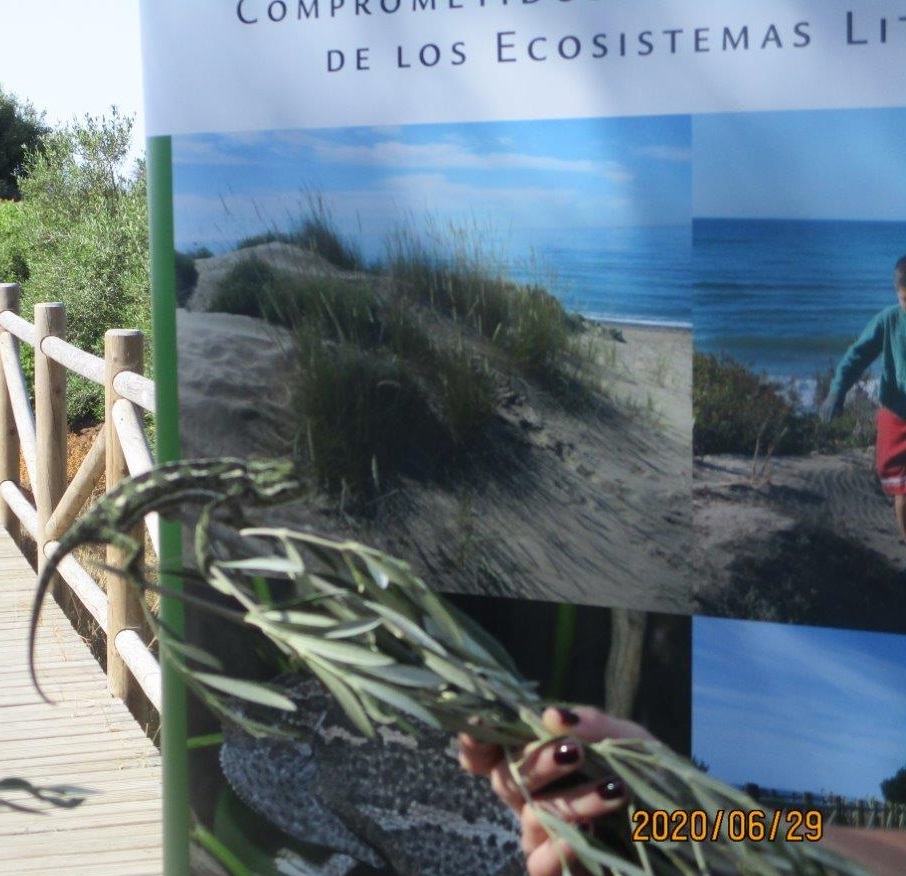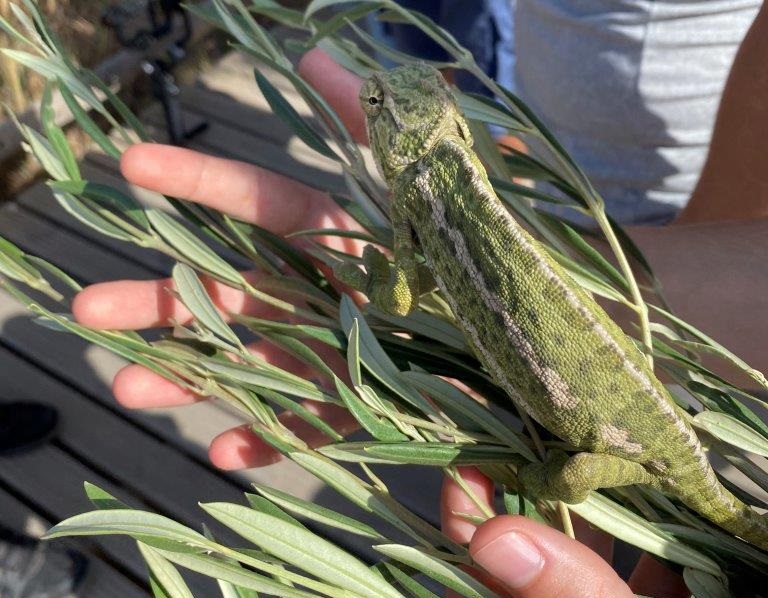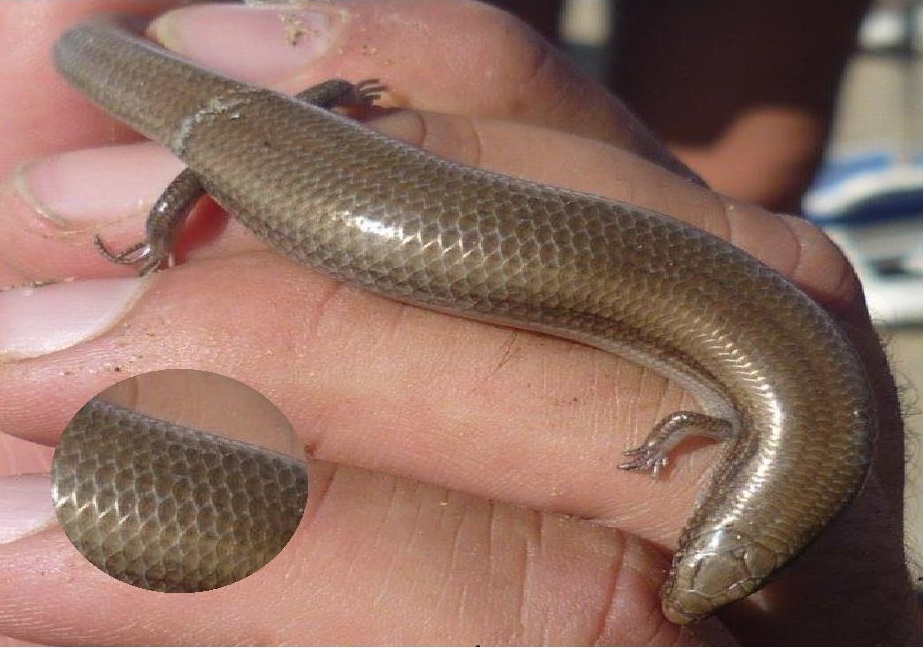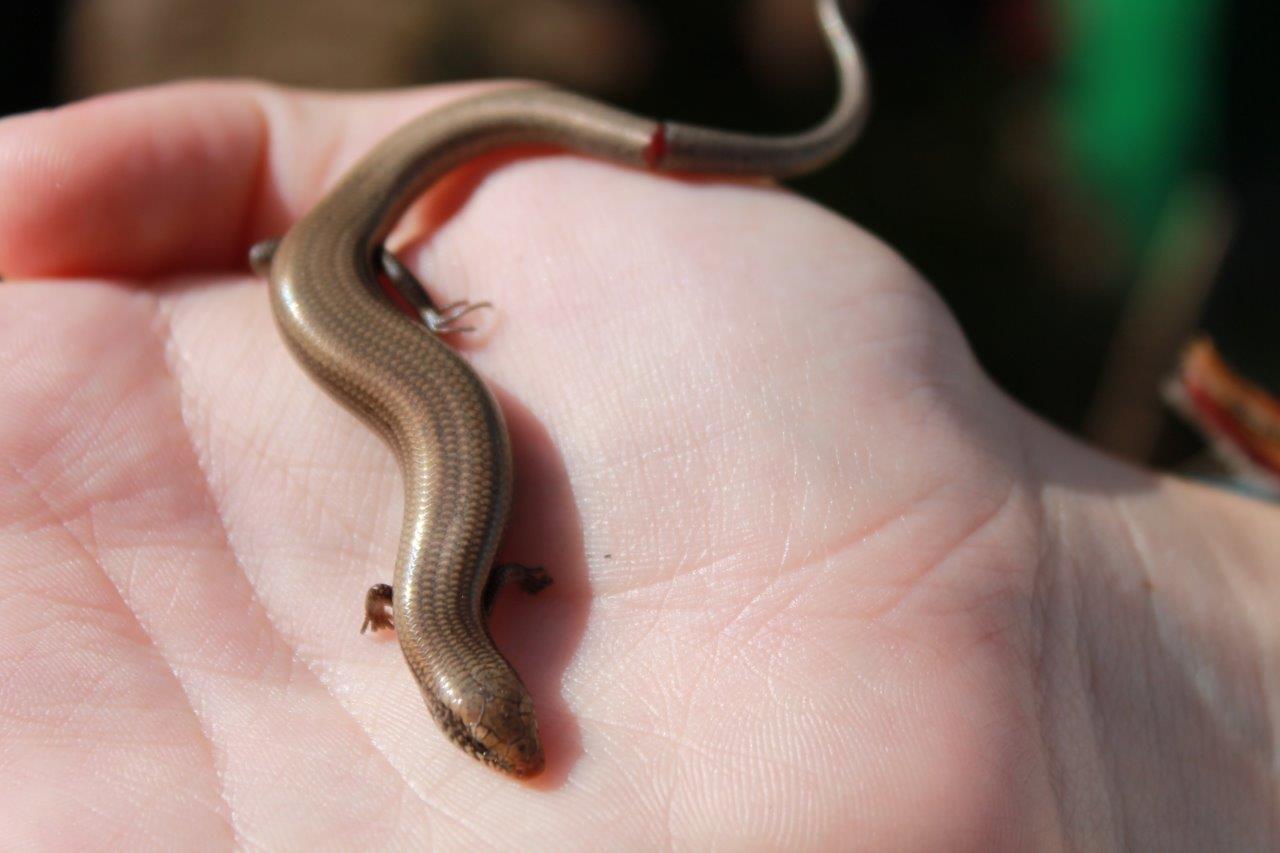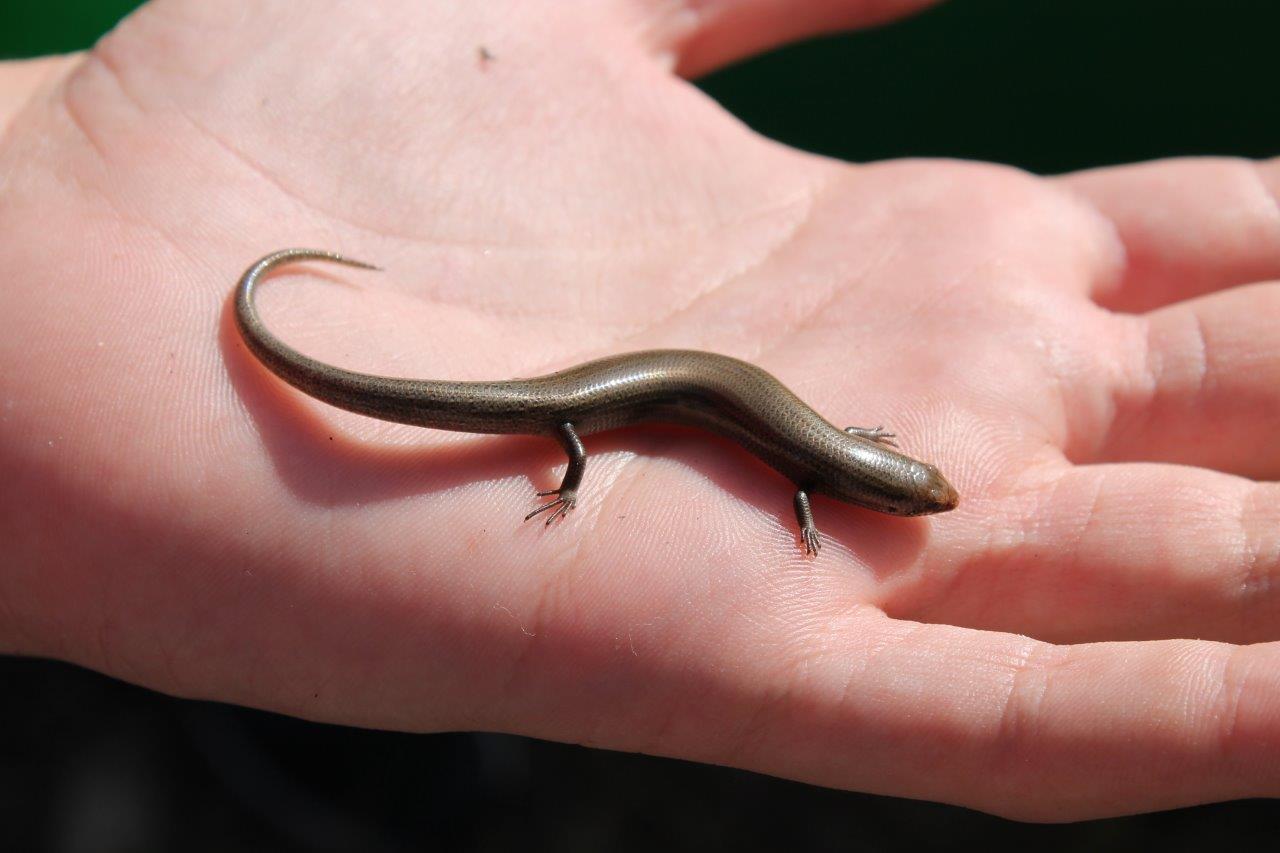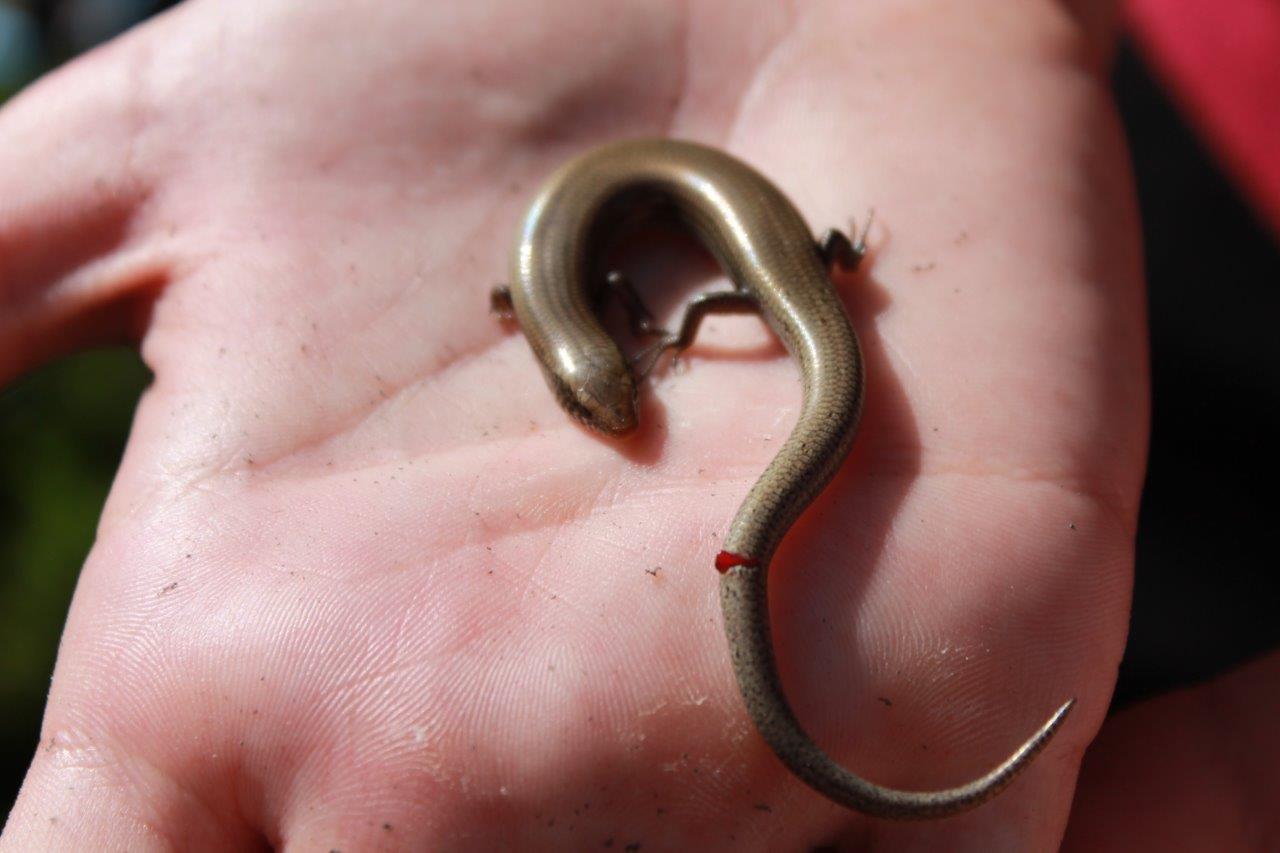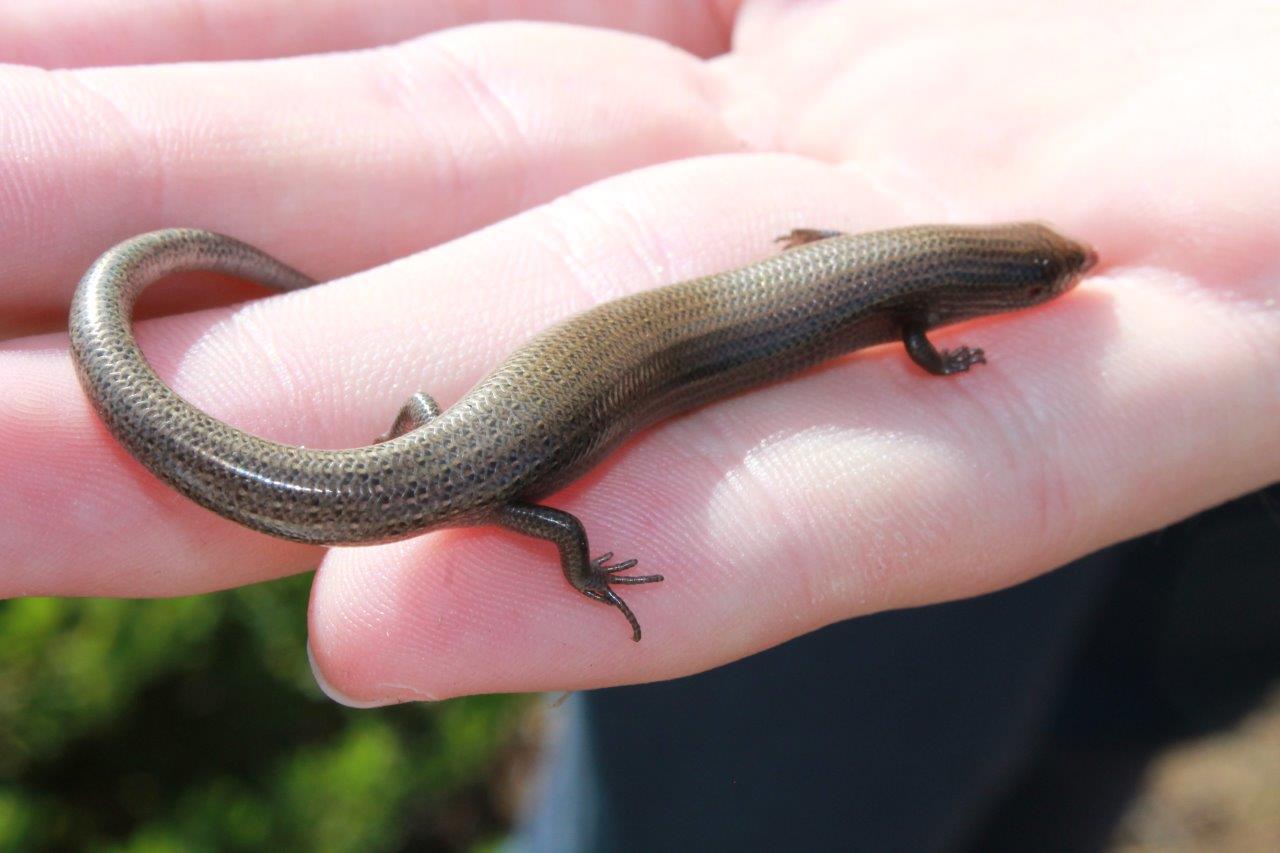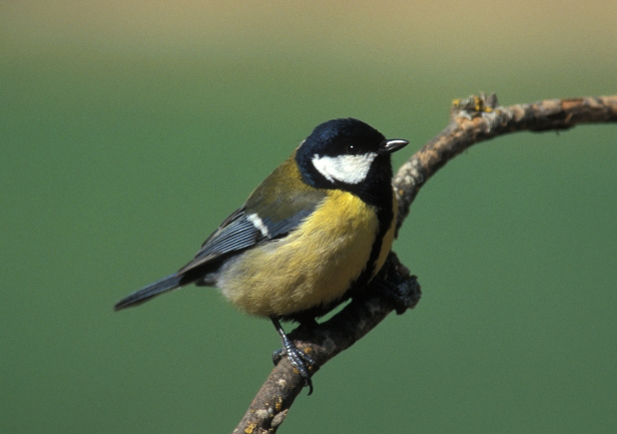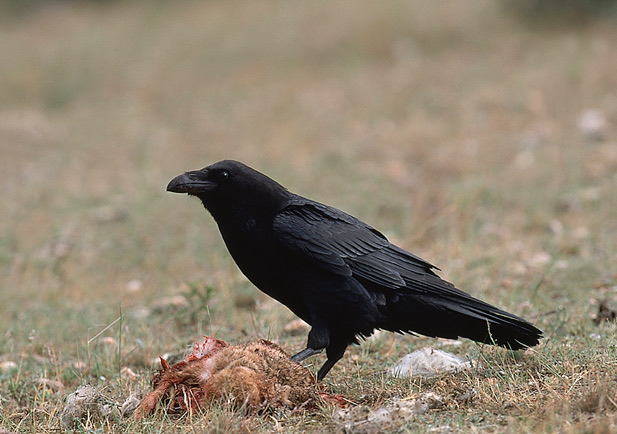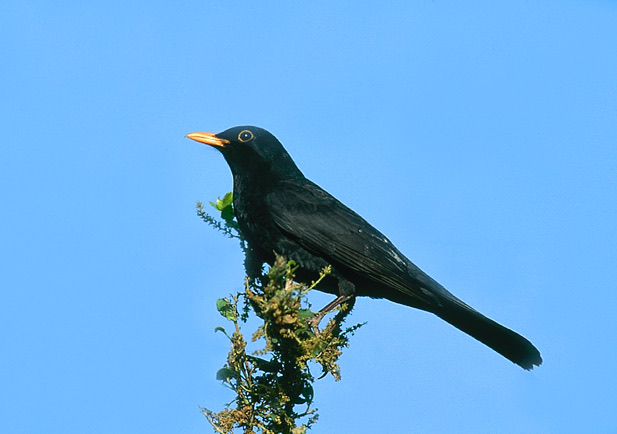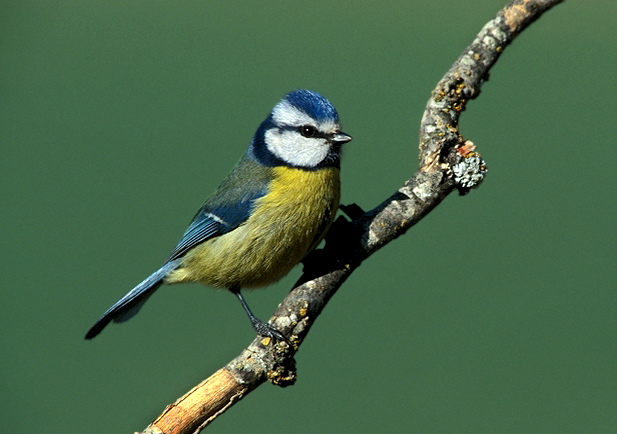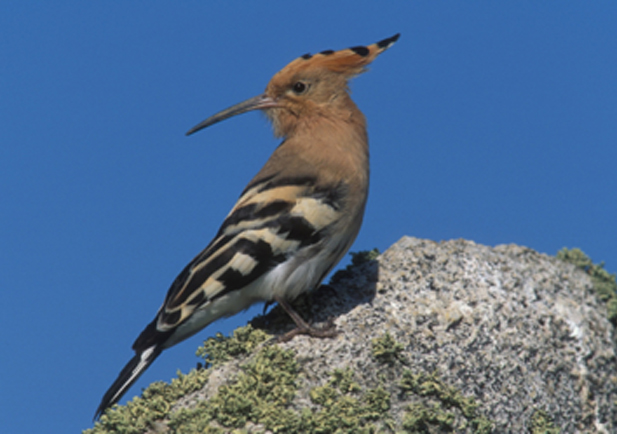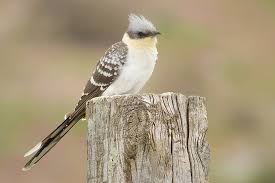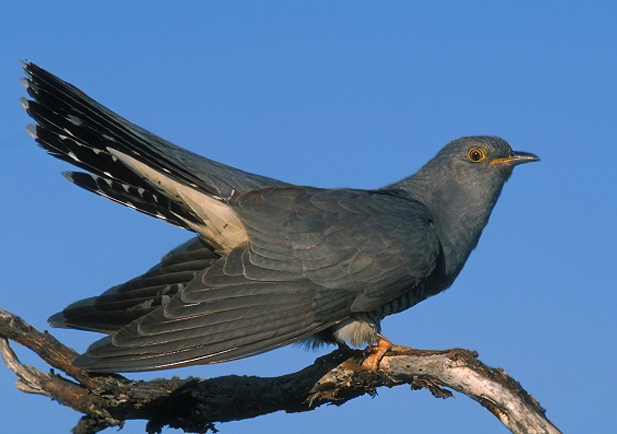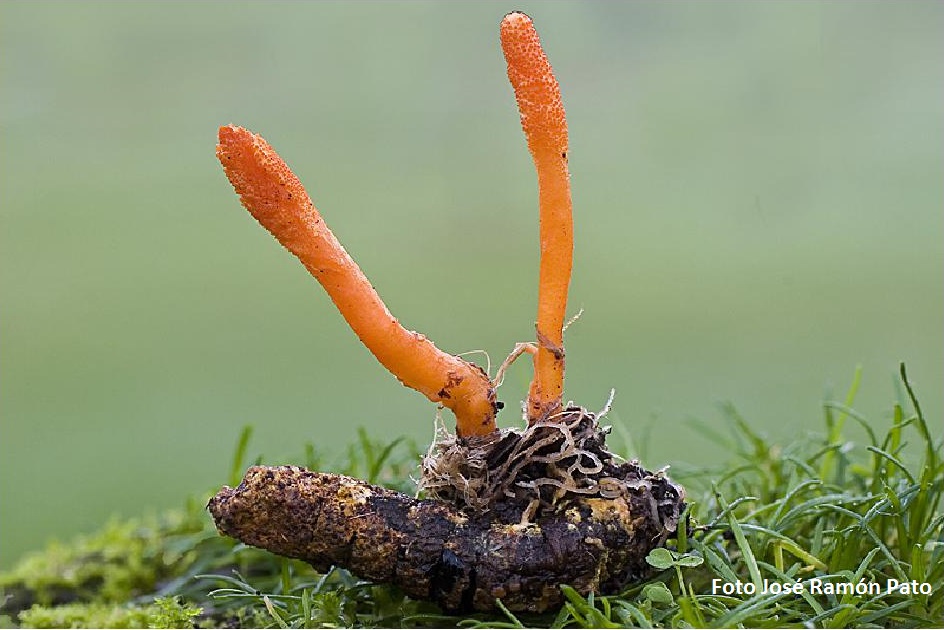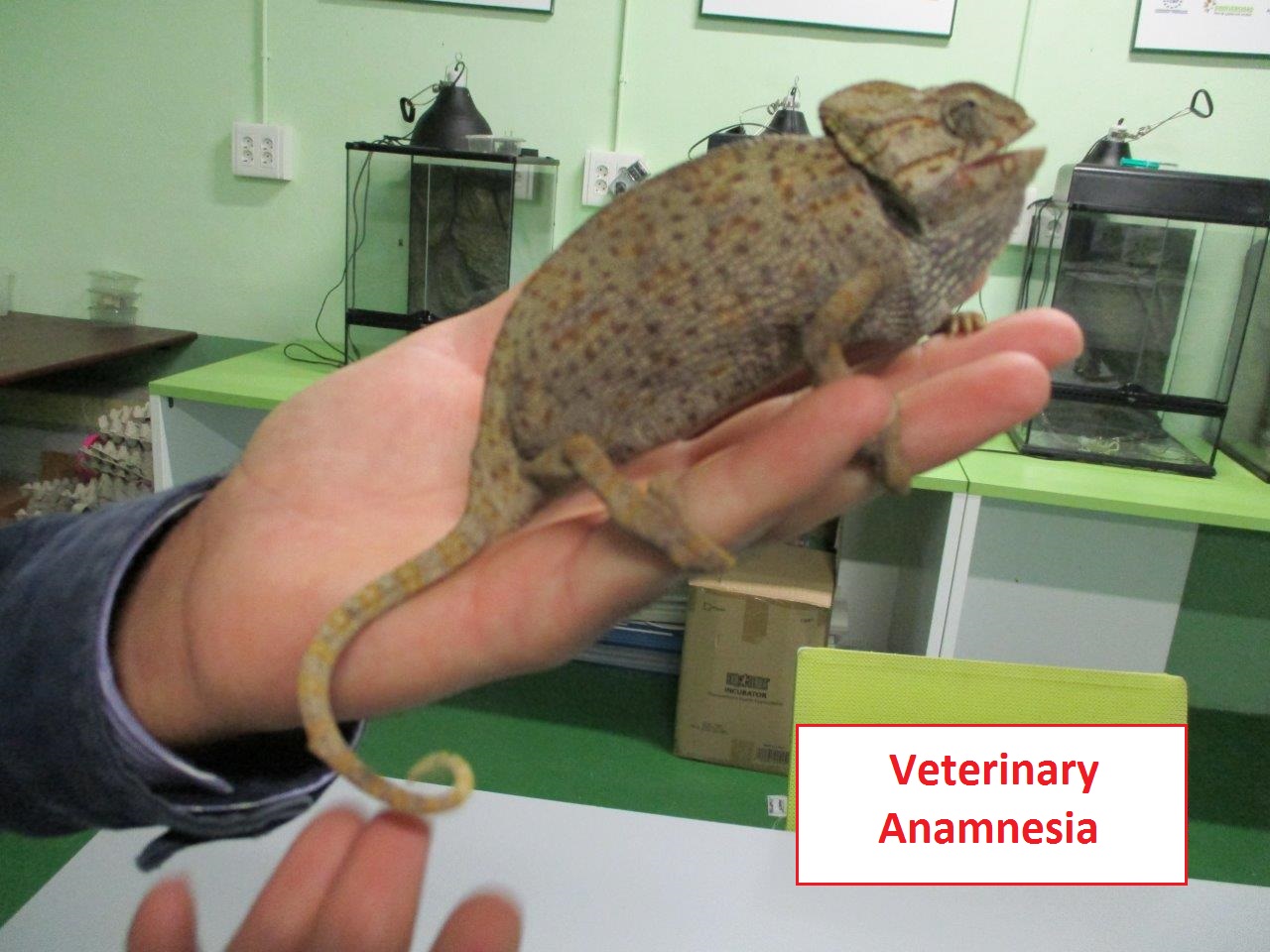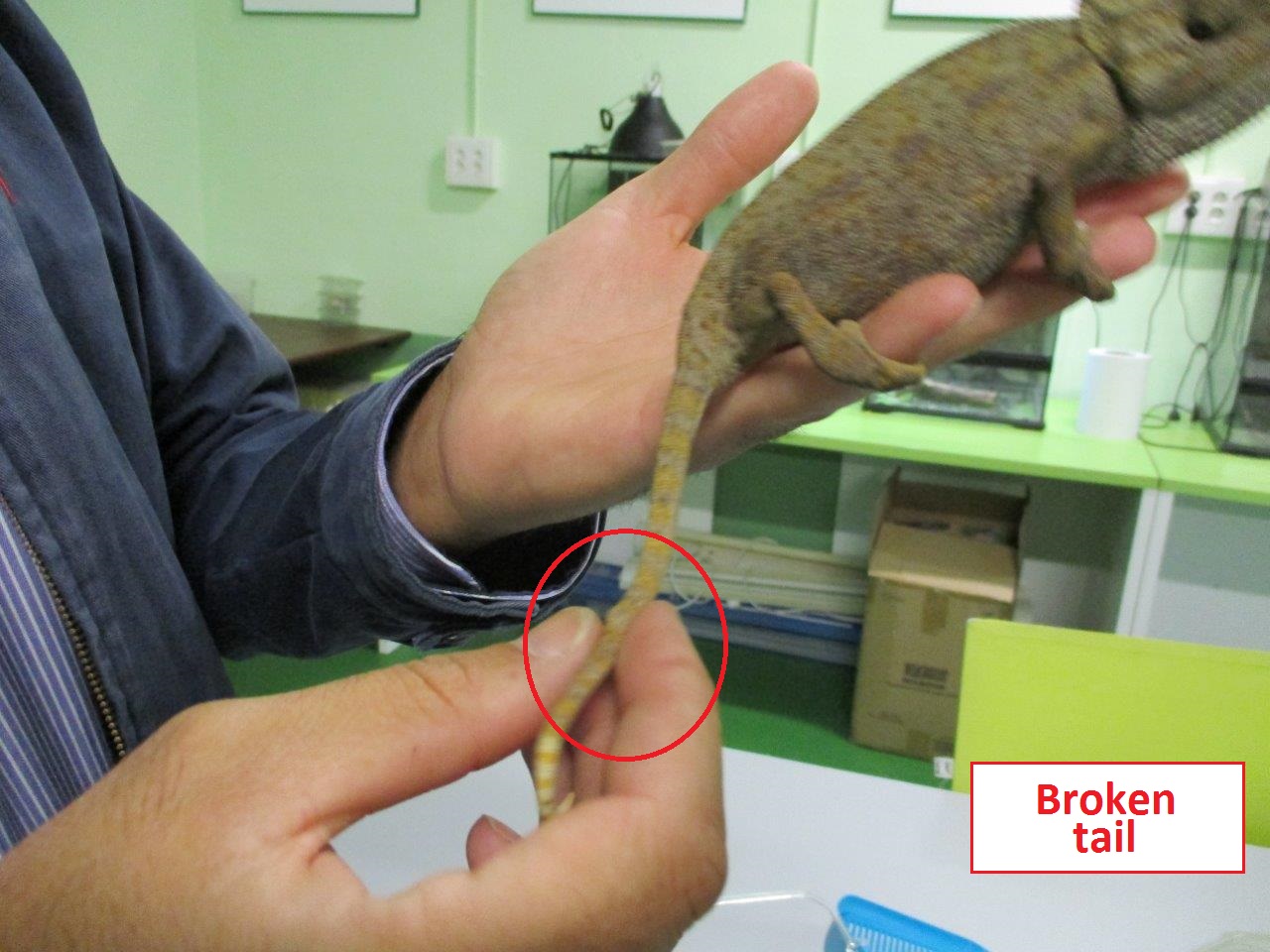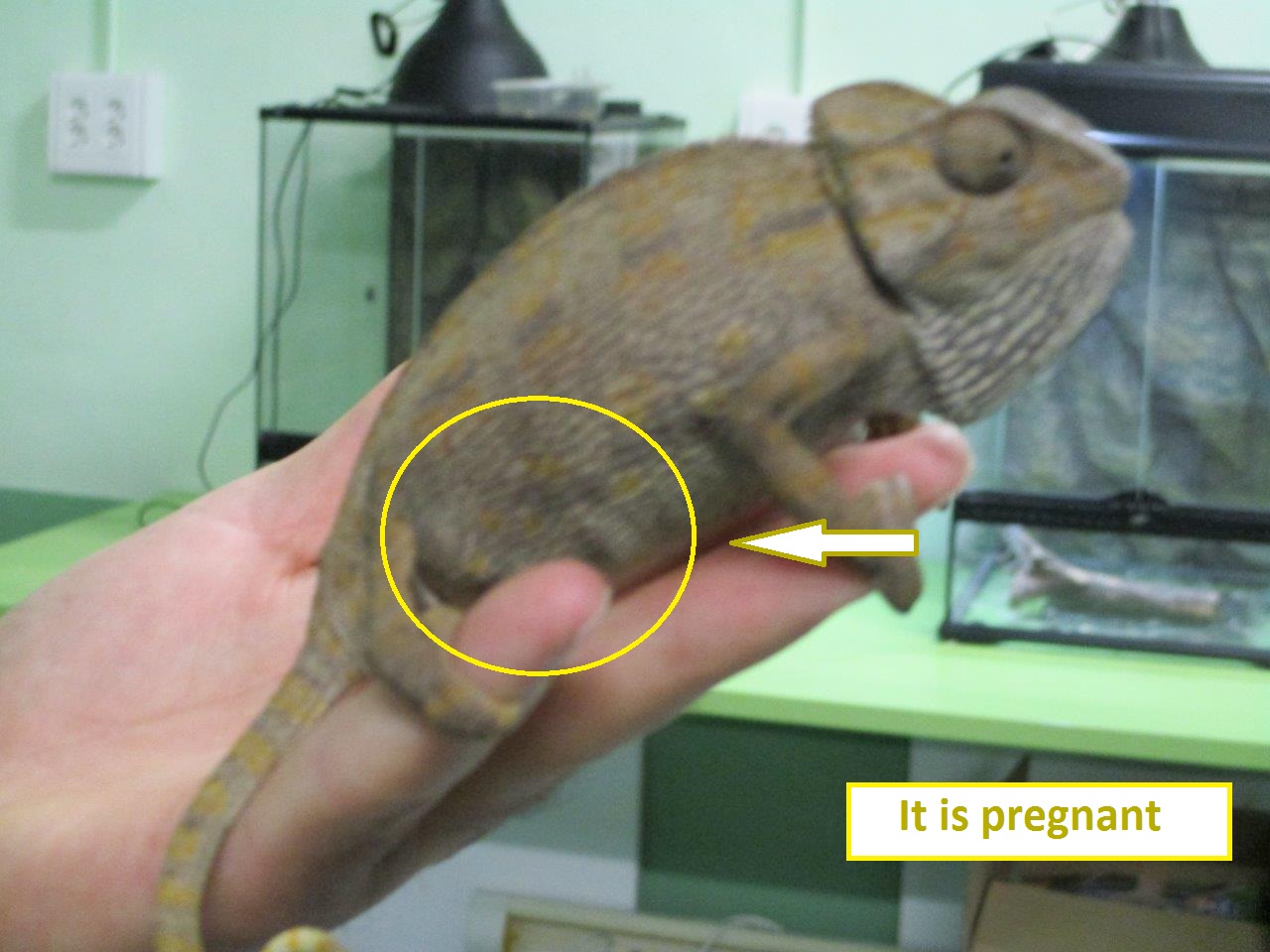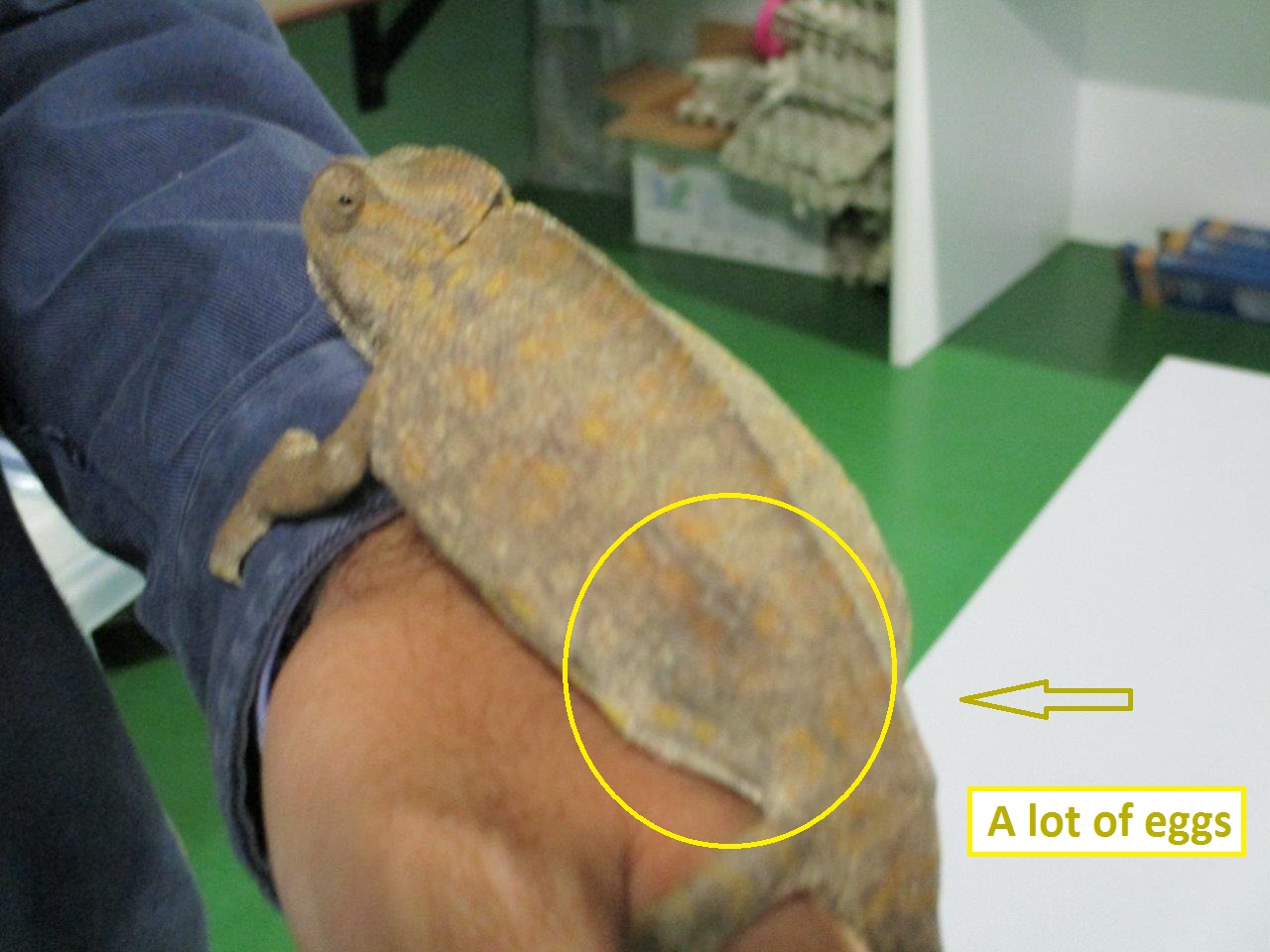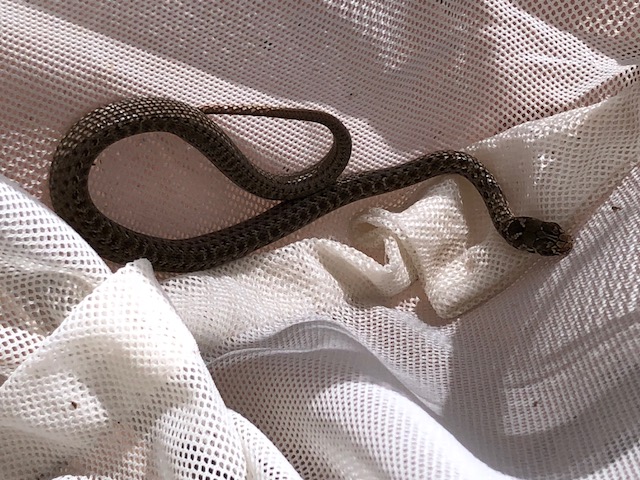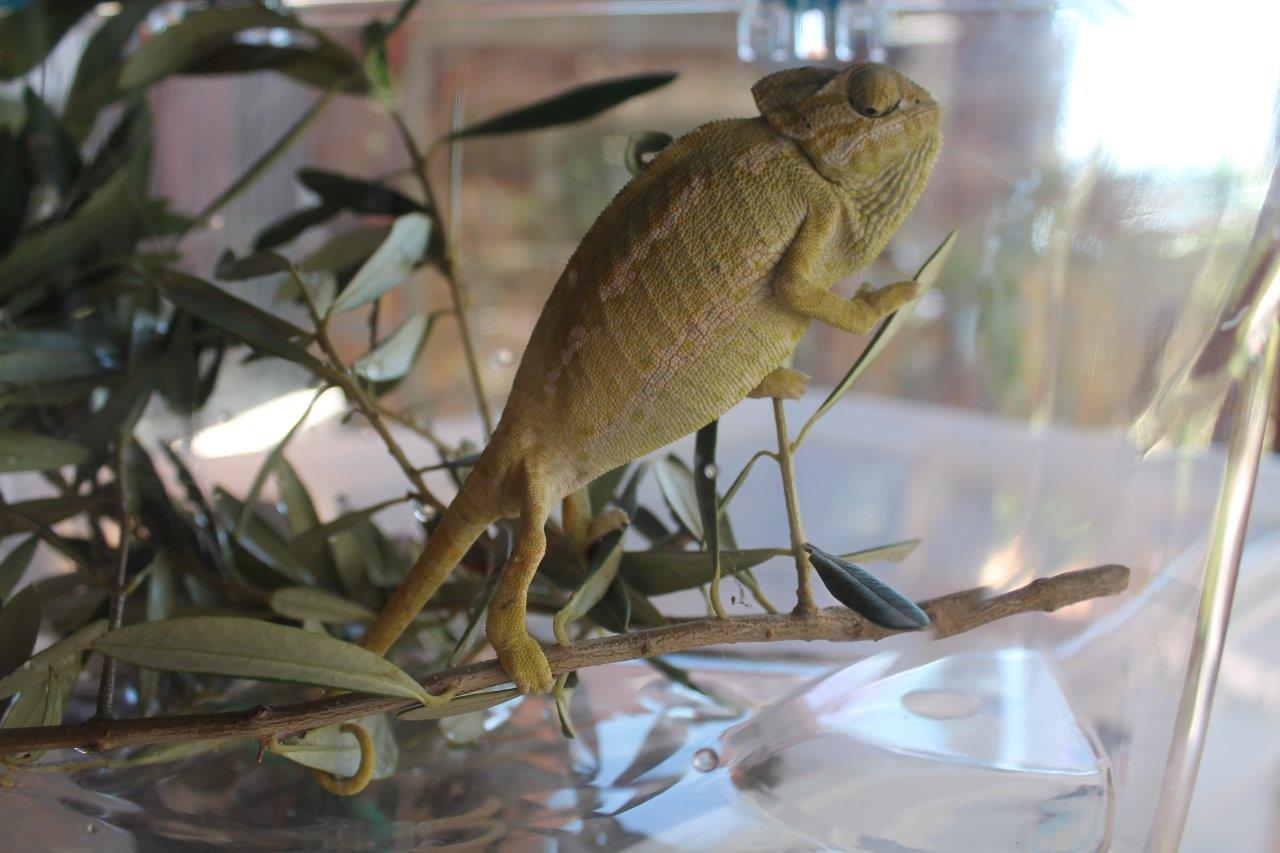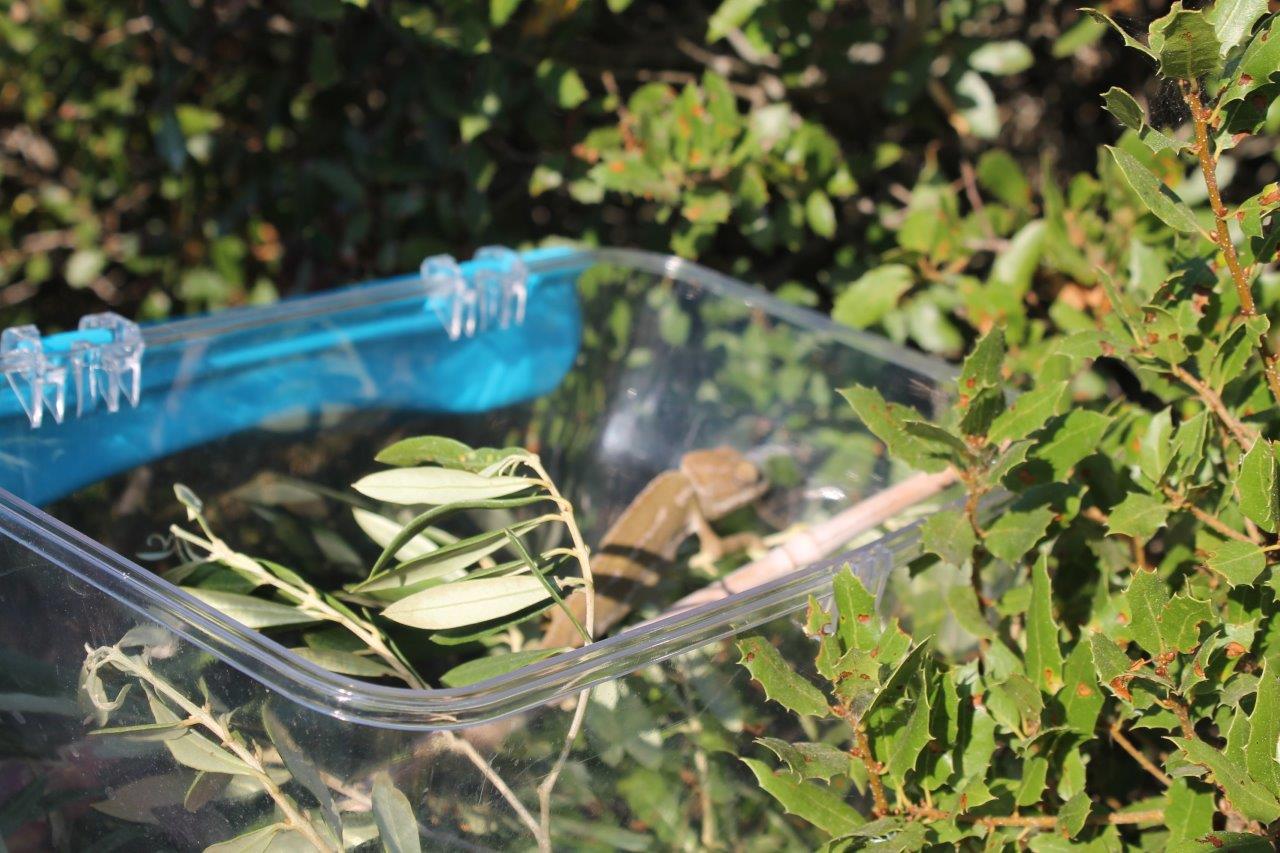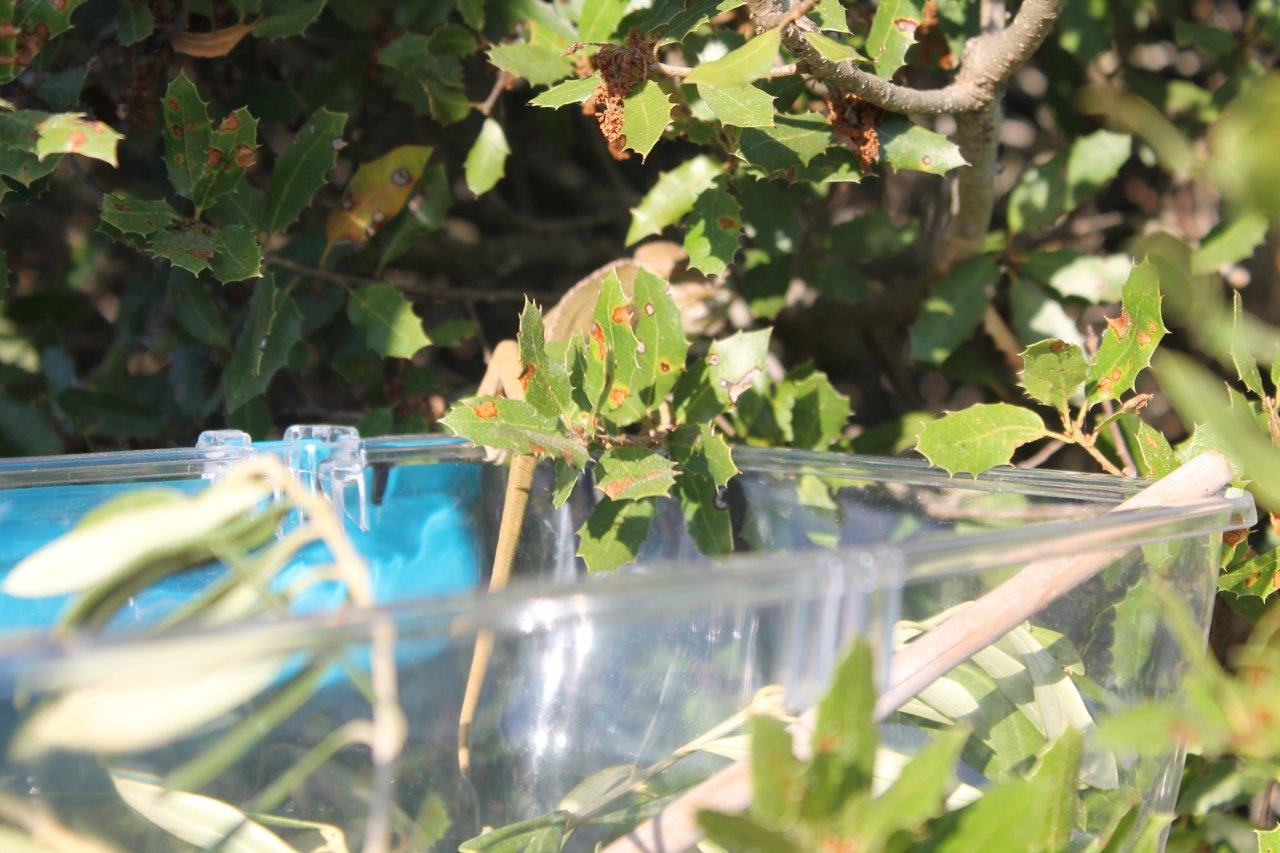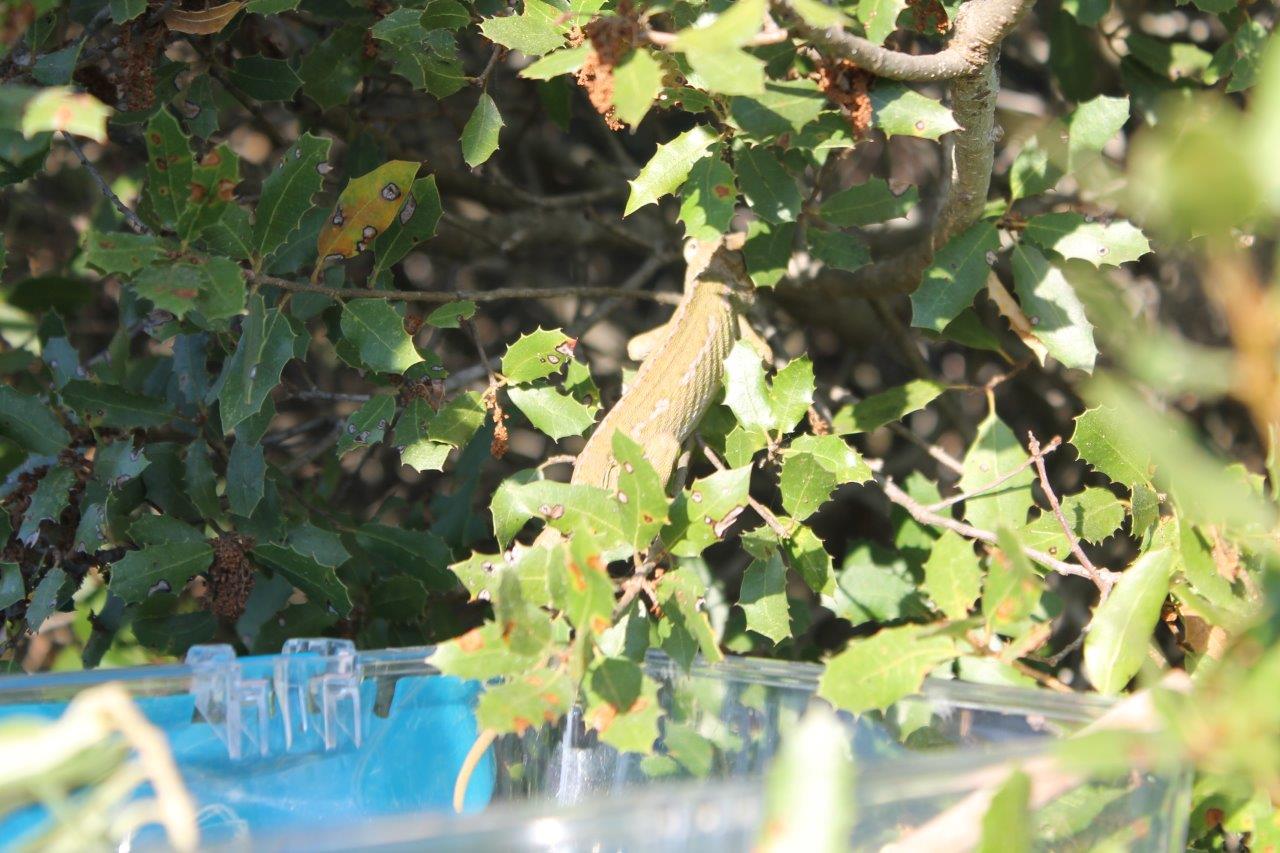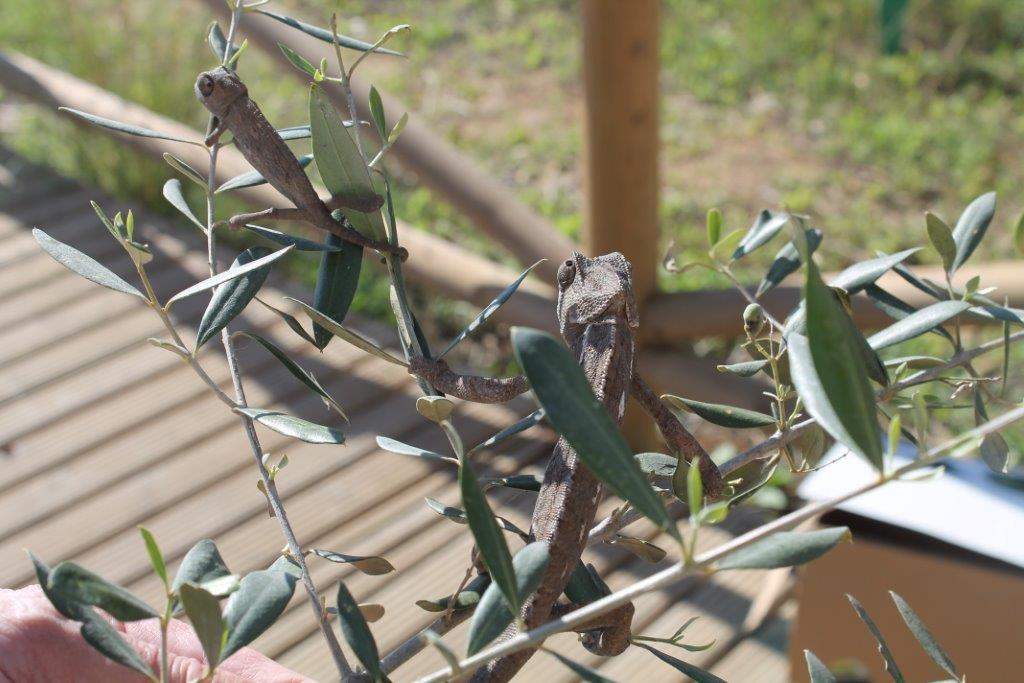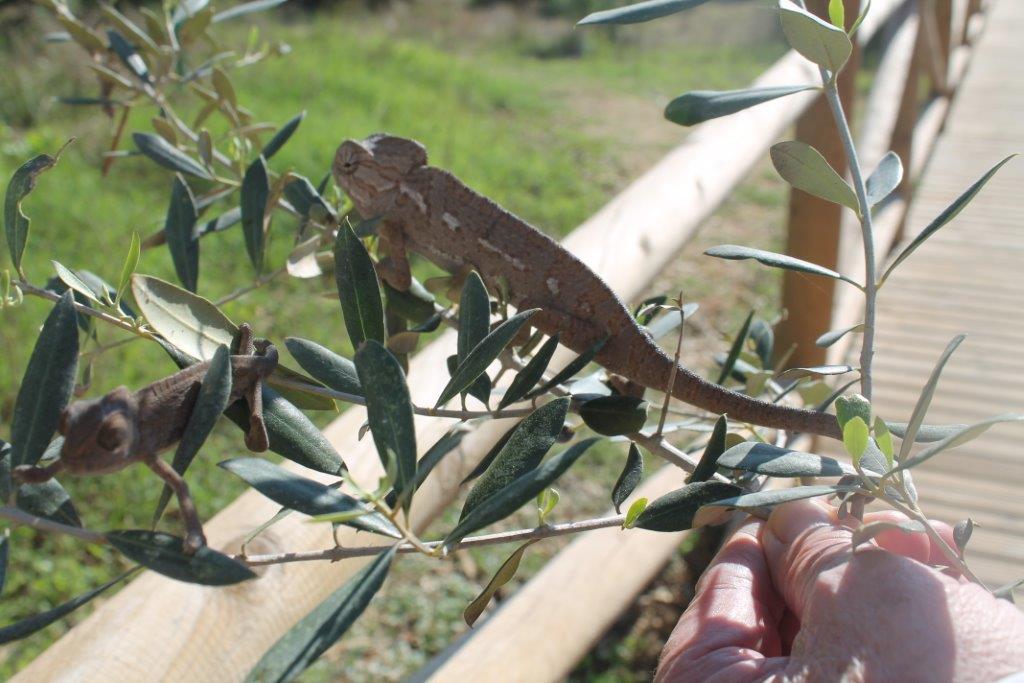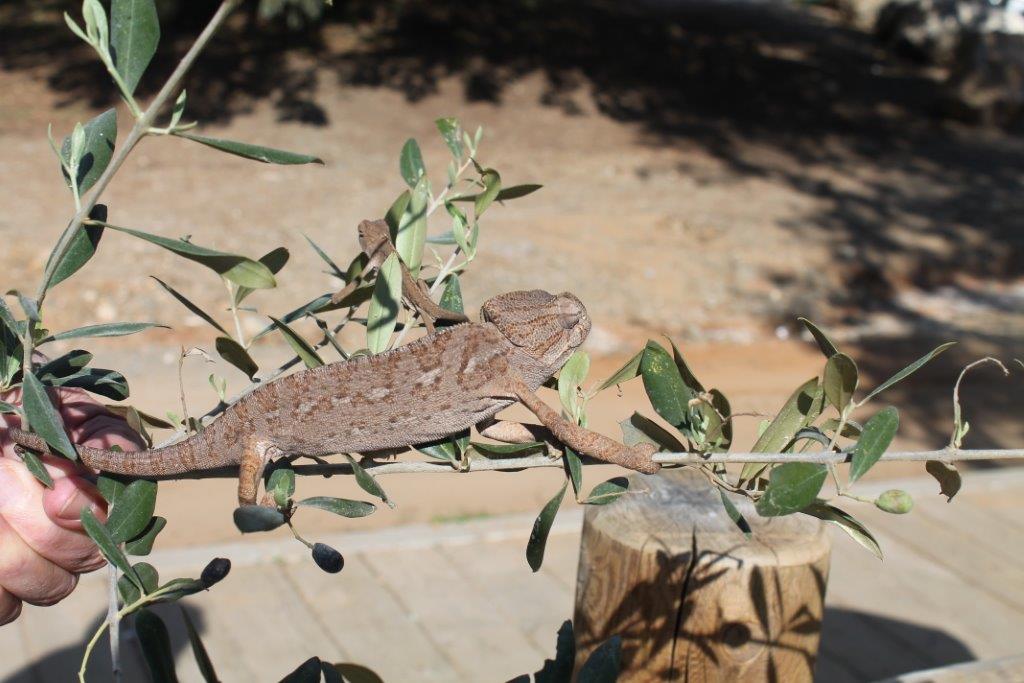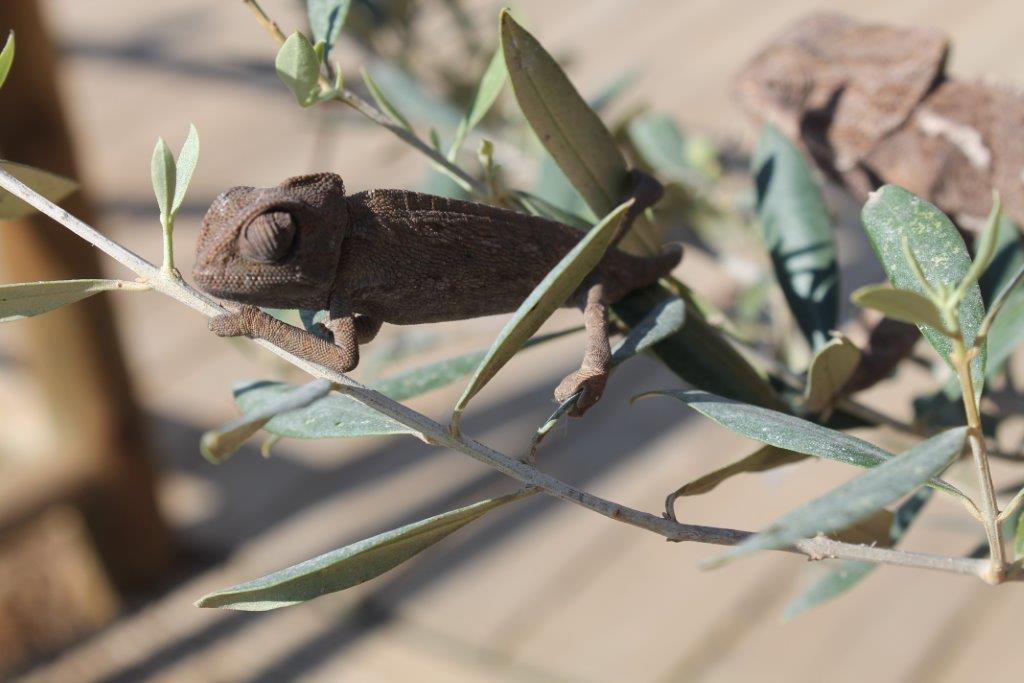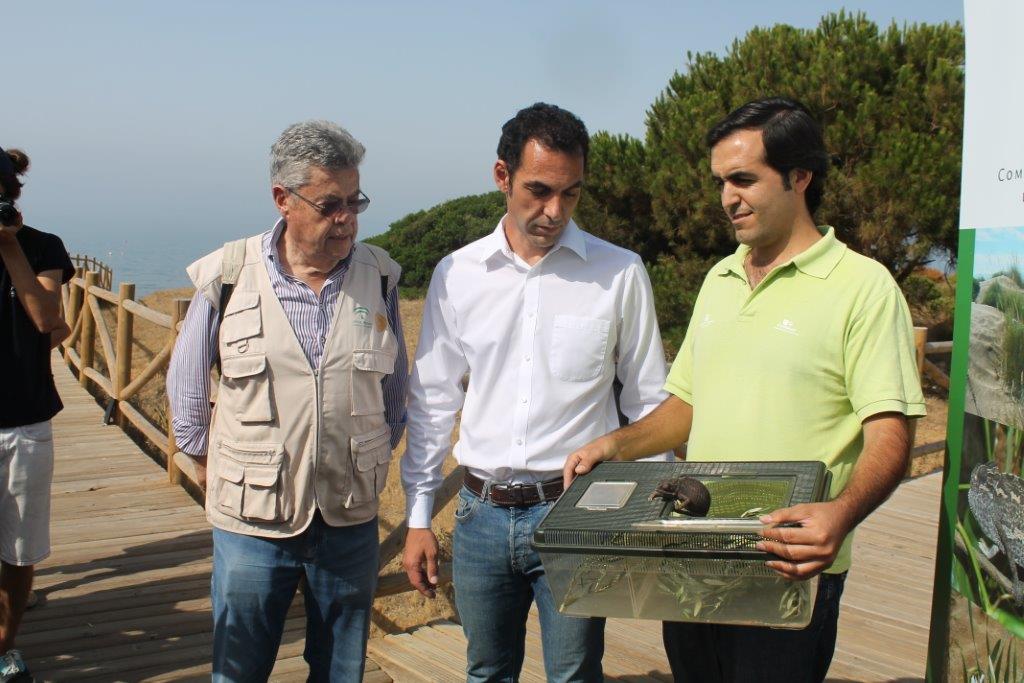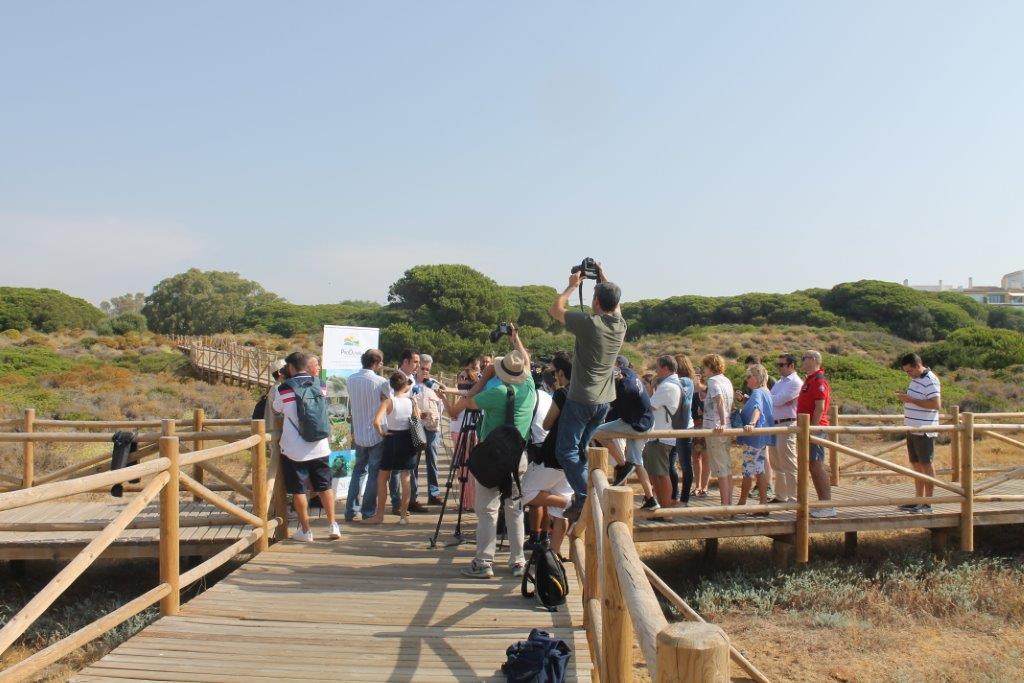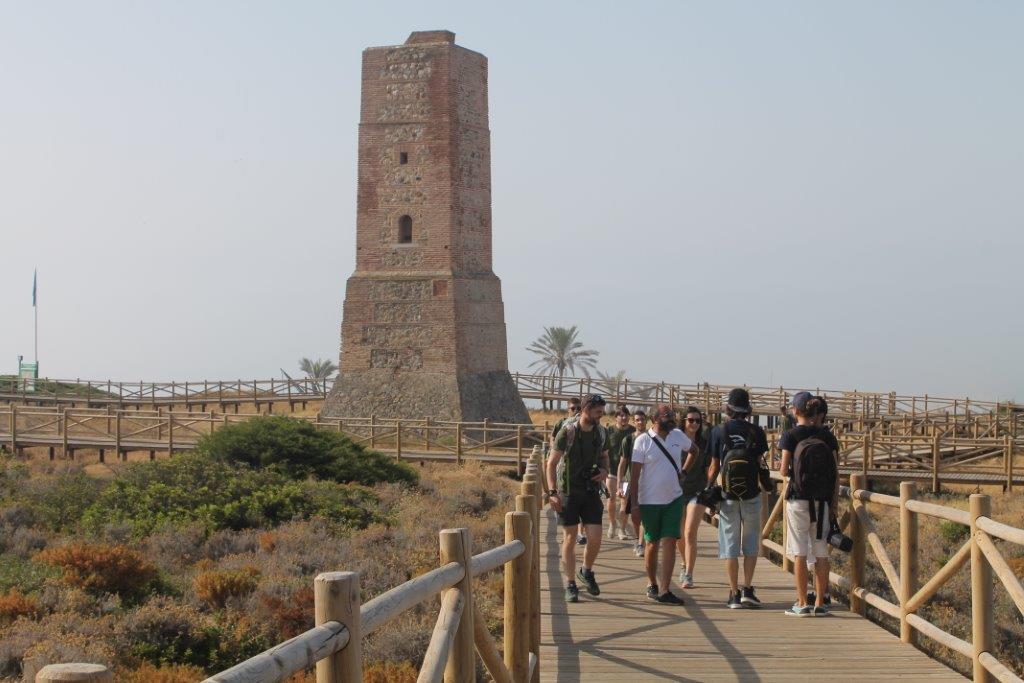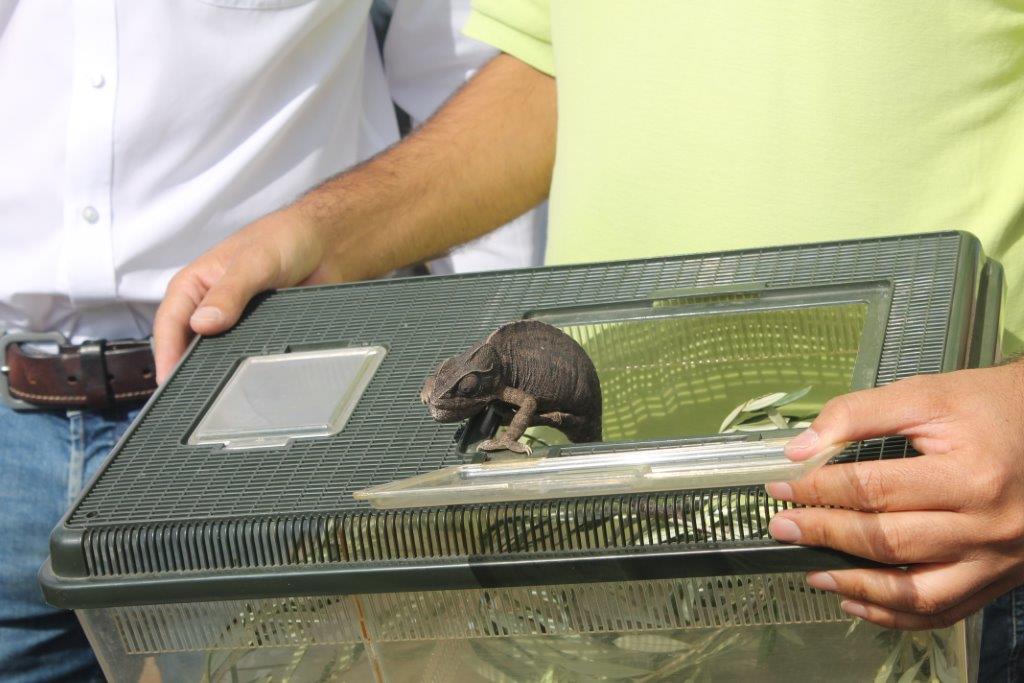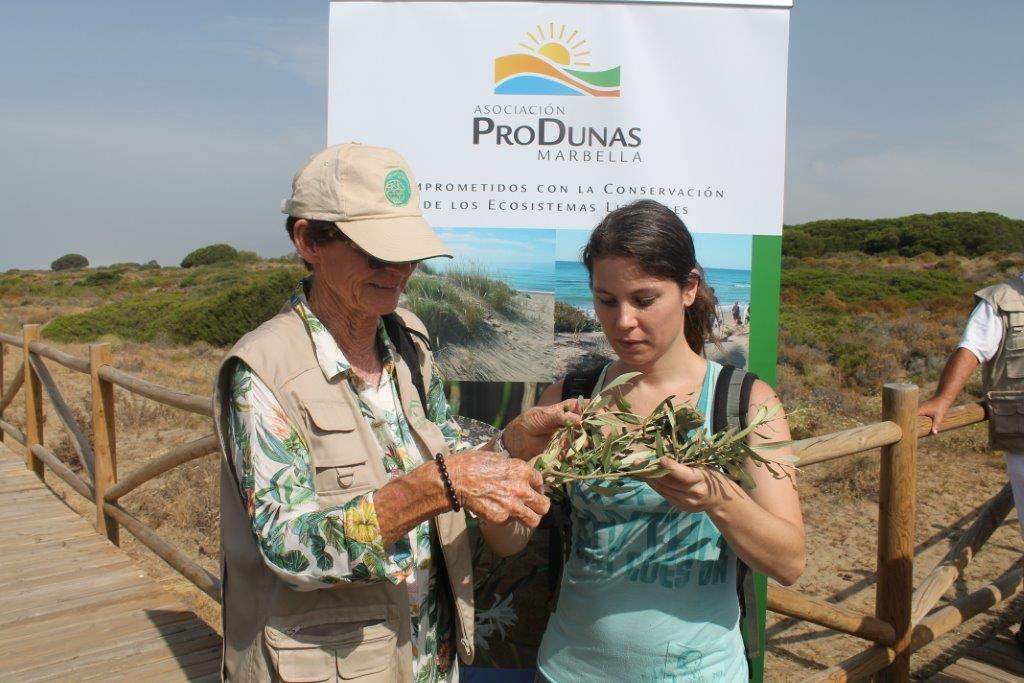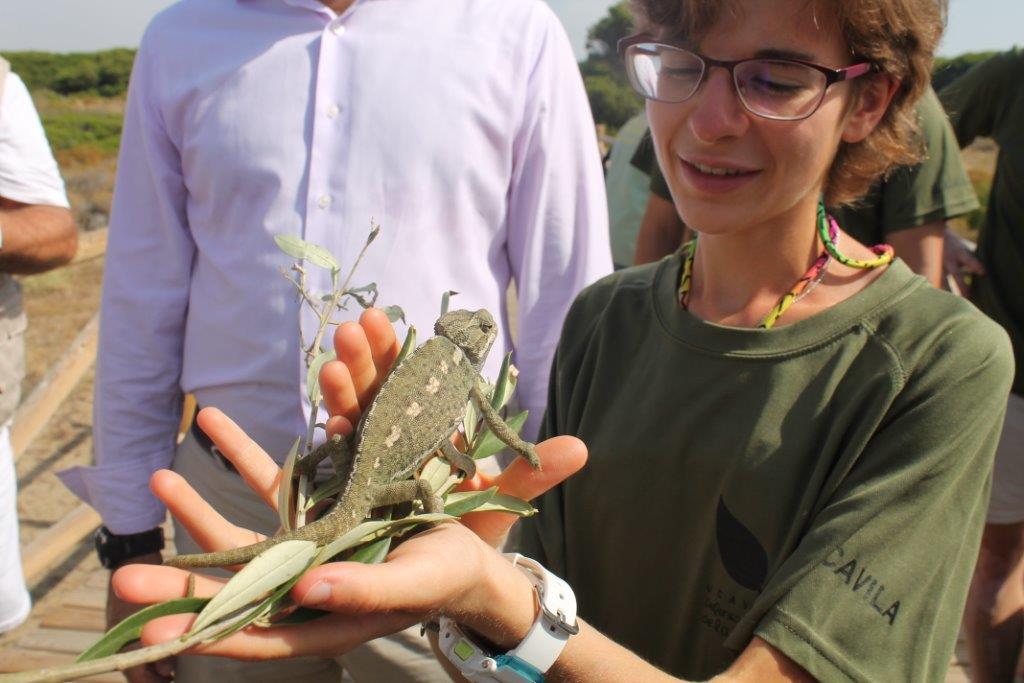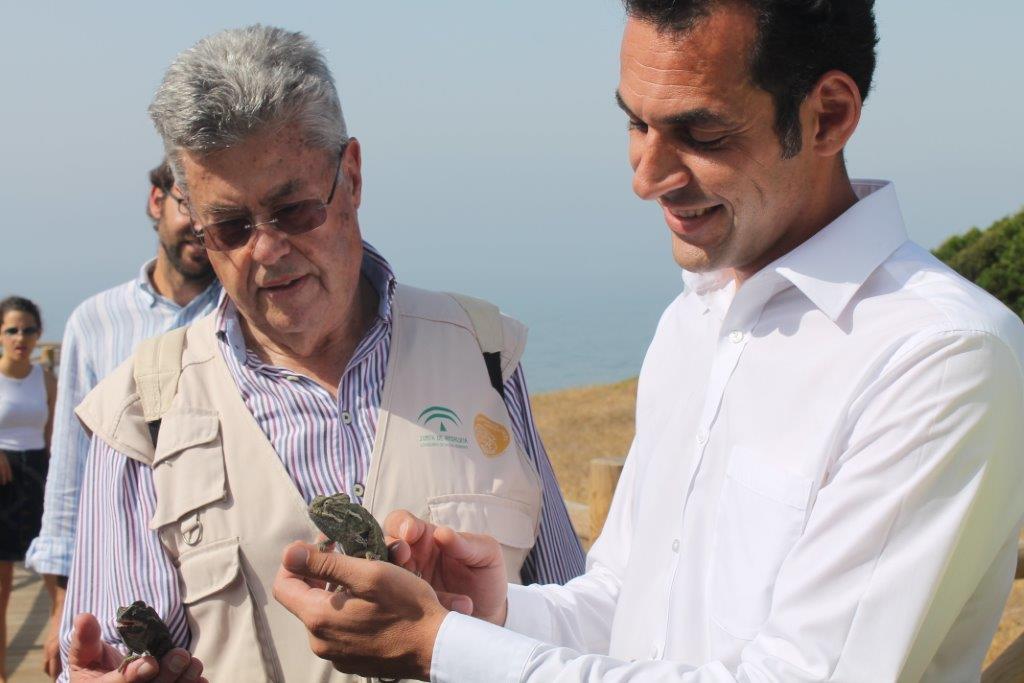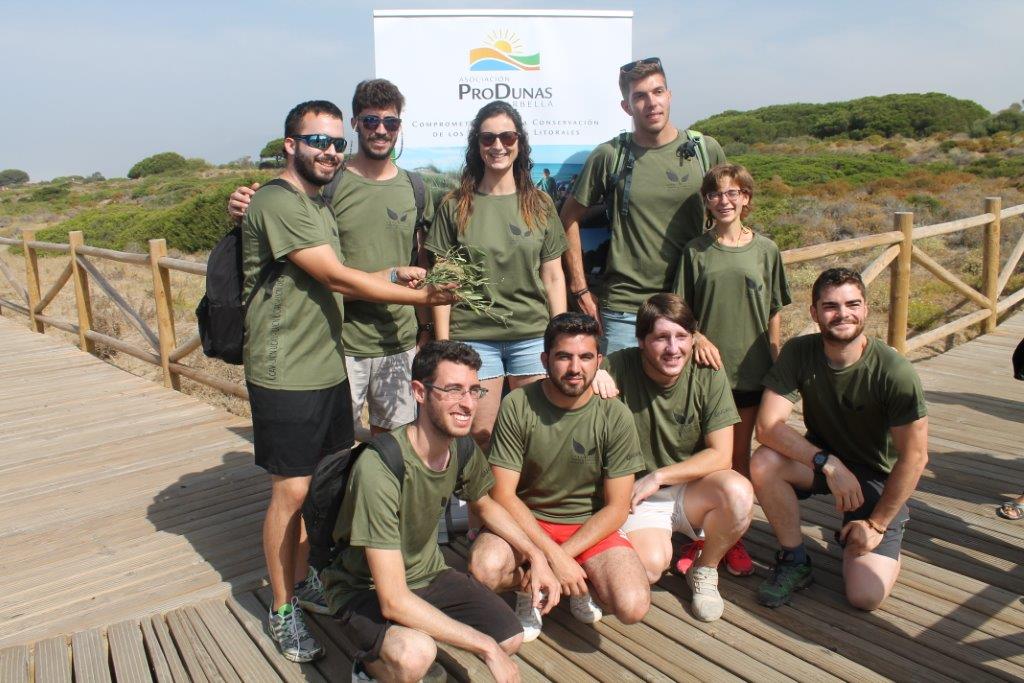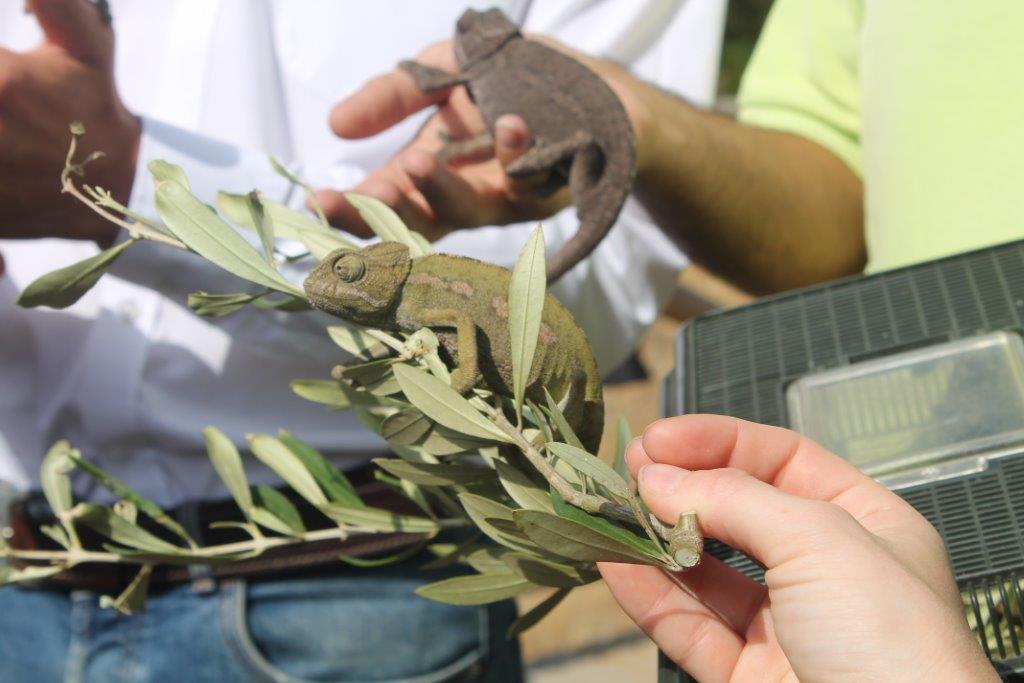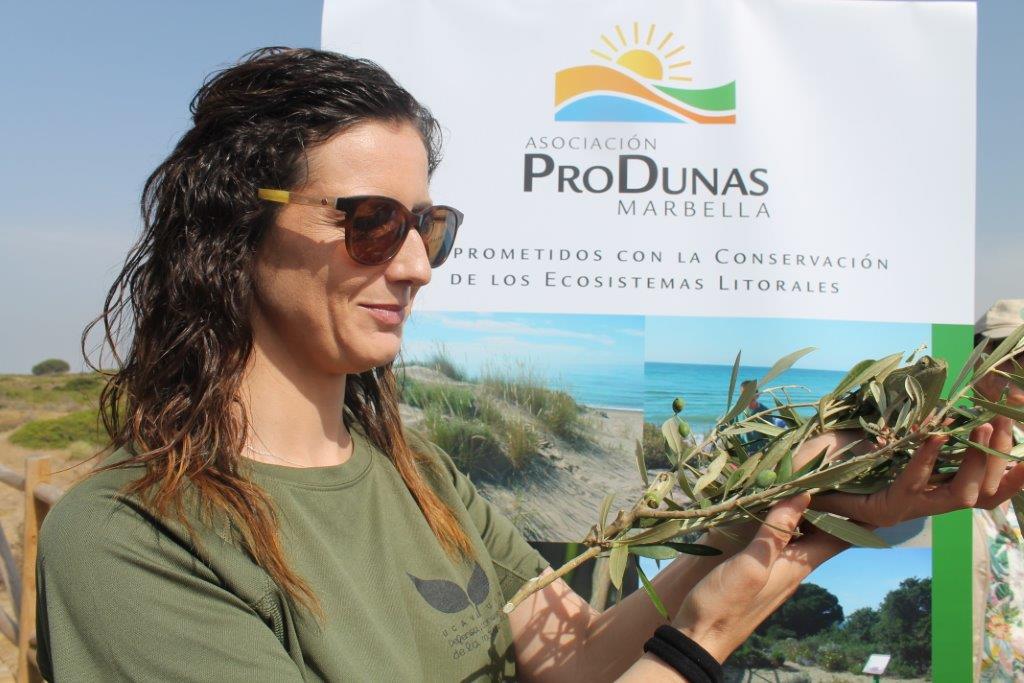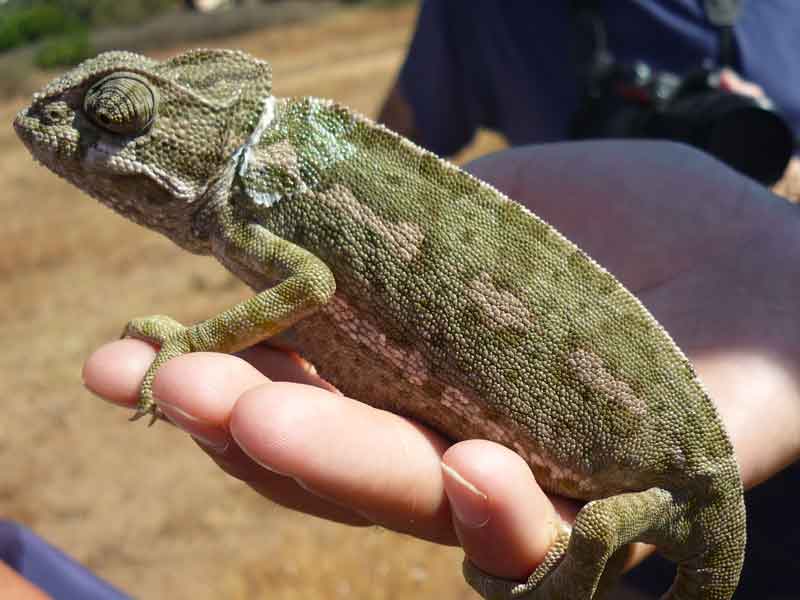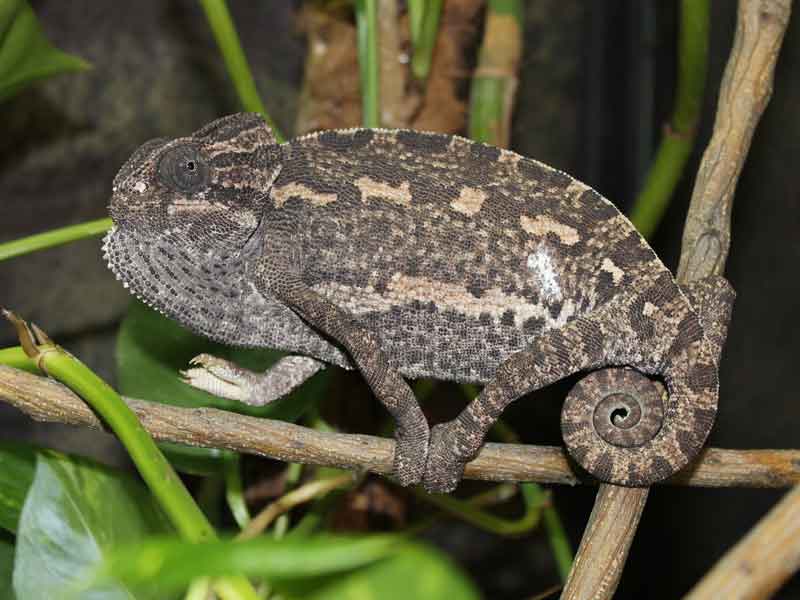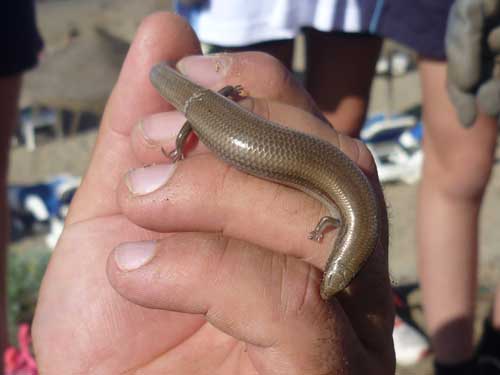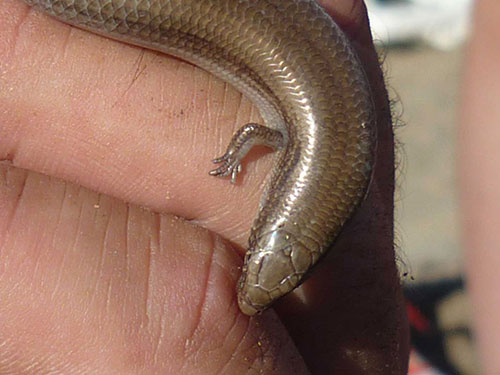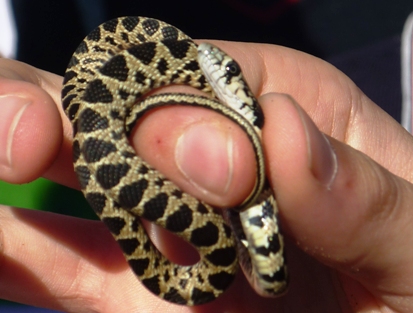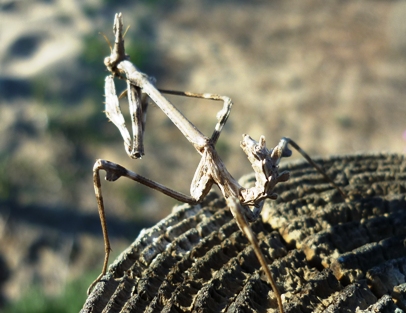
FAUNA - REPTILES & INSECTS
July 2024 – RED-TAILED LIZARD (Acanthodactylus erythrurus)
IN THE “DUNAS DE ARTOLA” NATURAL MONUMENT, Cabopino (Marbella)
This is the second year that students from the University of Malaga have carried out a sampling of the population of the Common Chameleon in the Cabopino dunes. In addition to amassing data on this intriguing animal, we also carried out our routine work in the dunes, such as eradicating FIS (Foreign Invasive Species), searching for Posidonia oceanica meadows in the off shore areas, or accounting for the dune herpetofauna (the group of organisms that includes both amphibians and reptiles).
This year, we went through the dunes on several days to photograph the lacertid Acanthodactylus erythrurus, commonly known as the Red-tailed Lizard. In total, we saw four adult specimens in the westernmost area of Artola.
The Red-tailed Lizard differs from other species by having spines on its fingers (akantha, thorn; dactylus, finger). The juveniles and adult females have the eponymous red tails. (erythros, red; oura, tail). It has a total body length of 20 cm, a short head with two supraocular plates standing out among smaller scales. As for its colour, it is light brown with white longitudinal lines, with dark rows between them in which small white ocelli are interspersed. As a curiosity, the spines on their fingers increase the support surface on loose and unstable terrain such as dunes. This gives it an agility that other species do not have in these environments.
It is found here and there in the province of Malaga, mainly on coastal sandbanks and dunes, such as mountain ranges where kakirites, dolomitic sandbanks or peridotite soils have been formed (Sierra Blanca, Sierra de Mijas, Sierra Tejeda, Sierra Bermeja or Alpujata).
This species is protected by law. It is included in both the Andalusian and National List of Wild Species under the Special Protection Regime and included in Annex III of the Berne Convention (1979).
This unique reptile must be conserved. Its coastal populations are disappearing fast due to the construction of urbanizations and promenades along with the cleaning and denaturation of the beaches.
As biology students, we want to highlight the importance of studying these increasingly scarce and fragmented coastal populations, which add richness to the ecosystem and are an example of evolutionary adaptation of a species to life in the dunes. Let us all protect the dune fauna and flora, let us all protect the red-tailed lizard.
Author of the text: Rafael Negrete.
Photographs: Rafael Negrete (specimens of Red-tailed Lizard found in July-2024) and Samuel Millán (May-2023).
Bibliography:
- Anfibios y Reptiles de la Gran Senda de Málaga y provincia.
- Enciclopedia Virtual de los Vertebrados Españoles.
- Guía de campo de los Anfibios y Reptiles de España y de Europa.
16th May 2023 – A BEAUTIFUL COMMON CHAMELEON (Chamaeleo chamaeleon)
IN THE NATURAL MONUMENT “DUNAS DE ARTOLA” IN CABOPINO
We were with schoolchildren from the Third Year of the Valdeolletas Junior School when we spotted a Common Chameleon (Chamaeleo chamaeleon).
Sighting one of the most impressive reptiles of the Iberian fauna up close made that a moment to remember, one of dynamic education about our environment for the school children. We were able to share with them many facts about this species so taking advantage of such an emotional moment, we taught them all we know about the Chameleon:
The Common Chameleon is one of the species of chameleon of the Chamaeleonidae family, a very ancient family of sauropsids whose fossils can be found in Paleocene sedimentary deposits from approximately 66-55 million years ago.
This animal is adapted to arboreal life, having opposable fingers and a prehensile tail. This is why the tail cannot detach itself from its body, as is the case with the gecko (Tarentola mauritanica). It lives in scrublands in the Mediterranean region, where it lives a solitary life, being very territorial even with its peers.
In Spain it can only be found in southern Andalusia where it finds its ideal habitat in coastal scrubland and dunes. We carried out several reintroductions of the species before the Covid-19 Pandemic, working together with the Territorial Delegation for the Environment, and these seem to have been successful as its preferred environment now appears to be the “Dunas de Artola” Natural Monument.
Since this magnificent Common Chameleon showed up we can testify that the species has been breeding perfectly which is of great satisfaction to us, since it seems to prove that its survival is guaranteed in this unique habitat.
That is why, if we want to protect and conserve this interesting species in southern Europe, we must also protect its habitats, one of which is the coastal dunes of the Ecological Reserve-Dunas de Marbella and the Natural Monument “Dunas de Artola”.
Protecting the dunes is protecting the Chameleon.
MAI 2021
DO YOU KNOW WHAT A SCARITES BUPARIUS IS?
A DISCOVERY IN THE DUNES
Recently in the dunes we have come across a strange black beetle with huge jaws. When faced with danger, they usually freeze, playing dead but with the upper jaw open, in a threatening pose.
This is the Scarites buparius, a beetle of the Carabidae family (Carabidae). It can grow to a length of about 35 to 40 millimeters. The black colour of this beetle is shiny, a phenomenon caused by aposematism.
It is a successful predator. It captures other insects, which it usually decapitates and devours. Females are generally a bit smaller than the male. The jaws of the male are bigger than those of the females, since they use them to fight other males or in their personal defence.
One of their favourite prey is the plump Pimelia, which are very abundant in the dunes of Marbella, as they find plenty of plant material to feed on. Let’s say that, on a small scale, the Pimelia are the zebras and the Scarites are the lions.
As apparently no one has yet studied this interesting beetle enough to give it a common name, we are going to call it “the Dune Decapitator” from now on, just as if it were the hero of a horror film. It is a new discovery for us in the insect world.
Author:
Manuel Zafra Valverde
DECEMBER 2020
DID YOU KNOW THAT THE HABITAT OF THE COMMON CHAMELEON IN MARBELLA
includes both the mountains and the coastline of the Costa del Sol? However, only a few decades ago, because of pressure from development companies brick and concrete reigned on the Costa del Sol, and the usual habitat of the Common Chameleon no longer existed.
That is why it causes us great joy and satisfaction, when we receive photographic testimonies or small videos, giving faith that the releases of common Chameleons in the Natural Monument “Dunas de Artola” are the most successful. The reintroductions of pairs of chameleons in this lush natural habitat are a success, since it shows us that their survival is fully guaranteed – the specimens that can be seen, are in excellent health, have the correct size and weight and move through the great orchard of the Natural Monument naturally.
We continue to bet that this interesting and unique reptile must have its place on the Marbella coastline and that little by little it can also be reintroduced into the other dunes of the Marbella Ecological Reserve-Dunes to also increase the biodiversity of the small fauna.
14th August 2020
HANDOVER OF 2 INJURED COMMON CHAMELEONS TO THE CONTROL CENTER FOR BIODIVERSITY IN MÁLAGA
Members of the public, nature lovers, brought 2 badly injured Common Chameleons (Chamaeleo chamaeleon) they had found in Estepona to us.
According to the guidelines of the Ministry of the Environment → Territorial Delegation of Malaga, any specimen found – injured or not, must be handed over to the Biodiversity Control Center.
Yesterday we took these 2 chameleons to Málaga so that they can get proper care until their biological cycle is complete. The injuries they have sustained, especially to their eyes, make it impossible for them to be released into their habitat. Their self-defence against predators and ability to search for food is greatly diminished. We hope they both recover in the Reception Centre.
Remember: the Common Chameleon is a protected species and may not be kept privately.
29 June, 2020
ANOTHER RELEASE OF 4 COMMON CHAMELEONS (Chamalaeo chamaeleon)
The reintroduction of the Common Chameleon into the “Dunas de Artola” Natural Monument protected area in Cabopino has been a great source of satisfaction as they are one of the most fascinating animals to be found in the Marbella dunes.
We tend to think that they do it just for camouflage, and while this is true, it seems that the main reason for changing colour is communication. Also, changing colour could help them regulate their temperature.
It is true that, due to their slow movement and harmless bite, chameleons need some advantage to survive their predators. This is provided by its famous colour change. Its hesitant movement which looks like moving leaves also helps them blend into the background.
Another outstanding feature is the ability to move the eyes in all directions. Scientific studies have shown that when the chameleon hesitates, the eyes share information, allowing them to have almost 360° vision (panoramic vision) even though each eye is hugely independent from the other.
The Common Chameleon is mainly arboreal and its limbs are highly adapted. Its legs with 5 digits in the form of a clasp and the prehensile tail that cannot be detached from the body provide excellent support. Females descend from the tree to dig a tunnel shaped hole in the ground in which to lay their eggs in early autumn. The hatching cycle of the eggs is long. It takes almost a year.
They have also developed a form of ‘long distance’ hunting, thanks to their very long tongues that can measure up to twice the length of the chameleon and reach speeds of 6 metres per second. The tongue is a very complex structure, made up of bony, elastic and muscle parts. It is kept in a cavity at the base of the mouth, and rolled backwards.
The loss of habitat due to human pressure and the huge urban development on the Marbella coastline is a great threat to chameleon. Therefore, by protecting the dunes we also protect the Common Chameleon.
April 2020
The Iberian Skink (Chalcides bedriagai) ….. The Great Unknown in the Dunes
This very interesting little reptile is one of the least known species that lives in our dunes. Today we want to bring you a little closer to it.
It is a uniquely Iberian reptile and can be found all over Spain. It is not on the endangered list (according to IUCN – International Union for the Conservation of Nature) but it is categorised as of “special interest” according to different national and local catalogues because of its ecological contribution and uniqueness.
It is small, only about 10-12 cm long. The body is cylindrical and short, ending in a little tail that is not very different from the body. Its entire body is covered in smooth, shiny, hexagonal scales. The legs have 5 digits (a characteristic that differentiates it from the Chalcides tridactylus which has only 3) and are extremely short. When we see a skink its unique scales and tiny legs make us think of snakes instead of lizards. And evolutionarily speaking they come between the two. The way they move is proof of this – at high speed with undulating movements when it is in danger but while it is calm, it uses its limbs.
The head is small and triangular with an orange chin, small dark eyes and very incredible ears. As for its colour and shape, this varies according to the population. It usually varies between shades of dark grey, green and brown with some yellowish spots.
It is very lethargic, somewhat more active in the morning and at sunset. Reptiles often sunbathe to regulate their body temperatures, but the skink gets its heat from the ground and the rocks it hides in (tigmothermia instead of heliotermia). For this reason, it frequents loose or sandy soils where it can bury itself. So much so that, among other habitats, it can be found in the Marbella Dunes Ecological Reserve as well as in the “Artola Dunas” Natural Monument in Cabopino.
However, they are very susceptible to the destruction of their habitat, and as soon as this is damaged by human activity, the populations are notably reduced. This is why conserving the Marbella Dunes is the best way to protect our great little treasure.
February 2020
Natural predators of the Processionary caterpillar (Thaumetopoea pityocampa)
The well-known “Pine Processionary” (Thaumetopoea pityocampa) is one of the greatest threats to the pine trees (Pinus pinea) on our dunes. This insect not only affects trees. Its stinging hairs contain a toxin which makes it very dangerous for pets and people alike, causing irritation and even suffocation in animals that ingest it. Coming into contact with these protective hairs can be dangerous.
However, some animals have managed to overcome this and have become their predators. They are, therefore, our best allies in controlling these pests biologically – the safest and most responsible method.
There are two phases in the development of this moth when they are most vulnerable: as a caterpillar and as a buried pupa. On reaching the caterpillar stage, birds such as the Great Tit (Parus major) feed on them. Even when the caterpillars have burrowed into the ground, blackbirds (Turdus merula) can detect them and dig them out and eat them. The hoopoe (Upupa epops), one of the showiest birds on our dunes, are expert caterpillar hunters who can even remove the stinging hairs before eating them. Other species of birds, not indigenous to our the dunes, such as the Cuckoo (Cuculus canorus), the Crows (Corvus corax) and the Blue Tit (Cyanites caeruleus) also feed on this insect at different stages in its development, including at the egg stage.
Insects such as ants, wasps and cicadas are other predators of the Processionary at both caterpillar and egg phases. Even in summer, bats feed on the moth. Some fungi such as the “processionary fungus” (Cordyceps militaris), common in coniferous forests, colonise the caterpillar. When these, covered with spores of the cordyceps, bury themselves in the earth, the fungus germinates and feeds on the organic components of the chrysalis and kills the moth developing inside.
Nature has many ways that help us deal with this pest. We can cooperate in simple ways, for example, by installing nesting boxes that offer refuge to birds that feed on the caterpillar. In this way, we avoid the use of more harmful measures and all along the coast, keep our pines, one of the icons of the Mediterranean vegetation, healthy.
January 2020 – COMMON CHAMELEON . . .is strolling in the Natural Monument “Dunes of Artola”, Cabopino
IT IS A SHEER DELIGHT to observe the leisurely stroll of this Common Chameleon (Chamaeleo chamaeleon). It is obvious that it is very much at home its habitat in the Natural Monument “Dunas de Artola” in Cabopino.
The population that we have introduced over the past 2 years, with the approval of the Junta de Andalucía, is evolving nicely and we are waiting for February-March to release another six. At the moment these are still in the CREA installations in the Montes de Málaga. They are being ideally cared for there in preparation for resuming their natural life cycle in Marbella.
This video is unique and was taken by a member of ProDunas. We hope you like it . . .
December 2019 – NEXT SPRING WILL BRING A WONDERFUL GIFT TO THE ARTOLA DUNES.
We are looking forward to the arrival of spring because this year something very special will happen. 6 Common Chameleons (Chamaeleo chamaeleon) will be released in the dunes. These are 3 pairs that have been bred in captivity from eggs collected by members of the Málaga Conservation and Recovery Centre of the Common Chameleon.
As you can see in the photos, they are barely eating and are in a state of semi-lethargy. This is because they are reptiles and are hibernating right now. When spring comes, these young chameleons will be returned to their original habitat in the Natural Monument “Dunas de Artola”.
We remind you that the Common Chameleon is the only European tree species – it can only live in trees-. That is why, in order to ensure its survival, it is essential to conserve the tree and bush cover in Artola.
We will welcome them to Artola and hope they have a long life. We hope they will keep this project going by laying a new batch of eggs. That will guarantee an increase in the local Chameleon population.
JANUARY 2019 – THIS TIME THE PRIZE WENT TO THE CAT
with a big smile on his face, a cat brought its owner this chamaeleon! Luckily, the injuries were not too serious, so we were able to let him go free in his new habitat in the “Dunas de Artola” Natural Monument.
With a great show of energy she immediately took to the place. As you can imagine, this was really heartening. Good luck, little chamaeleon!
NOVEMBER 2018 – COMMON CHAMAELEON WITH ITS TAIL BROKEN
This Common Chameleon was twice damaged and therefore will receive twice the attention until its release.
Its tail was broken when it was run over. But it has survived to fulfil its raison d’être: lay a good number of eggs. The Common Chameleon Endangered Species Collection Centre will help all the eggs hatch when their time comes.
It will be a beautiful event and we will give it every attention and care so that many beautiful little Common Chameleons can be released into the “Dunas de Artola” Natural Monument area.
It will be a long wait as the eggs take almost a year to hatch and for the hatchlings to see the light of day.
We know how to be patient . . .
OCTOBER 2018 – BACK HOME WITH A HAPPY ENDING
for this common Chameleon (Chamaeleo chamaeleon) – it had been run over but was saved and looked after for 11 weeks at the Centro del Camaleón (CREA) in Málaga. It received dedicated intensive care and was fed daily.
It recovered slowly from its wounds and we now have released it into its habitat in the dunes of Artola.
We hope it likes its new home and we wish it luck.
To Joaquín, who looked after it so well in the Centre, we offer our sincere thanks for the care and attention he lavished on this patient.
SEPTEMBER 2018 – WE WOULD LIKE TO INTRODUCE A BEAUTIFUL SNAKE TO YOU.
It lives in the dune ecosystems – this snake is not poisonous, although it looks scary!
We have to get used to the fact that the animal kingdom does not distinguish between its own habitat and ours and when it needs to bathe it comes into our zone, even a house, without a backward thought.
We have taken over its environment.
The group of colubrids (Colubridae) includes about one thousand eight hundred species. Future research has to be carried out to provide more clarity so as to better understand a group as large as this.
We call every ophidian which is not a threat to man and is not even very big,
a SNAKE. To stimulate curiosity and get study going about this fascinating reptile world, we bet you that: all snakes are serpents, but not all serpents are snakes . . .?
JULY 2018 – IT WAS LOST, WANDERING ALONG THE ROAD
AND WE WERE ABLE TO SAVE IT – thanks to some of our citizens getting in touch with us.
As it was in perfect condition, we were able to set this beautiful young Common Chameleon free in its natural habitat in Artola. We only had it with us for a few hours but we got to known it is able to confirm that it will know how to find its place, be able to look after itself and protect itself from whatever life
has in store for it.
We wish it all the very best as it stays, comes to adulthood and leaves its mark on the “Dunas de Artola” Natural Monument..
BABY BOOM IN ARTOLA
Thanks to members of the public working together, we can confirm that the baby chameleons in their habitat in the Natural Monument “Dunas de Artola” are in excellent health.
The families are getting bigger and soon there will be a good sized population of common chameleons on site.
IBERIAN WORM LIZARD (Blanus cinereus)
We received some photos in the post from a friend who wondered if it was an earthworm because it has eyes and a mouth.
The Blind Worm is a reptile adapted to underground life and specialised in digging tunnels. Its cylindrical body is covered with quadrangular scales that are aligned in the form of rings.
Although it has no limbs, its closest relatives are Iberian skinks and lizards.
It has a small head and a rounded snout. Its sight is vestigial (a very important fact), while its sense of smell and hearing are developed.
The Blind Worms reproduce in spring between March and June and lay a single setting of 1-2 eggs about 34mm in length and 6mm in width, so we can say that the specimen found is still young. It is found exclusively in the Iberian southeast and it likes all forms of oak and Mediterranean pine forests.
13TH JULY 2017
A FURTHER RELEASE OF 5 COMMON CHAMELEONS (Chamaeleo chamaeleon)
These specimens had been taken care of at the Chameleon Recovery Centre and handed over to our Association by Environmental Sustainability for the area of the City of Málaga.
This release was handled jointly with the Regional Ministry of the Environment and Territorial Planning and the Malaga Provincial Council and once again it took place in the Natural Monument “Dunas de Artola”, in Cabopino, which is now the “habitat of the Common Chameleon”.
AUGUST 2016
PRODUNAS SPONSORS 5 CHAMELEONS
5 Common Chameleons (Chamaeleo chamaeleon) have been released by the Pro Dunas Association into the Artola Natural Monument area. The re-establishment of this species is a great challenge for us. The reptiles come from the CREA program of the Andalusian Regional Government.
- Each Chamaeleon has been micro-chipped to help with their survival.
The breeding season is from July to September when, after 2 months gestation, the eggs are laid on sandy soil. 10 months later they hatch and a new chameleon
cycle begins.
Pro Dunas requests that no-one touches any of the chameleons or removes them from their dune habitat.
Any sighting of a chameleon should be reported to the Pro Dunas Association.
JUNE 2016
IBERIAN SKINK (Chalcides bedriagal)
This small reptile is about 15 cm long and is unique to the Iberian Peninsula. The Bedriaga Skink differs from other Skinks in that it has 5 fingers on each of its 4 legs.
The body is smooth and shiny and is brownish-grey in colour with a small, triangular head and a rounded snout. The tail makes up approximately half the length of the animal. The skink looks like a mix of lizard and snake.
It is very shy. It moves with rapid undulating movements. It hides in the sandy environments covered in dune vegetation in the Ecological Reserve of the Marbella dune coastline area.
It feeds on various invertebrates. It is very pacific and is not poisonous¡
NOVEMBER 2013
Do you want to receive our Newsletter?
Do you want to become a member or be our friend of the dunes?
Asociación ProDunas Marbella
La Asociación trabaja incesantemente en defensa y preservación de los singulares ecosistemas aún existentes en los entornos naturales con dunas en la Provincia de Málaga; impulsa la protección de su flora autóctona y pequeña fauna silvestre; fomenta la recuperación, rehabilitación y conservación de la interesante biodiversidad en las zonas dunares del municipio de Marbella.
+34 609 600 706
comunicacion@produnas.org

